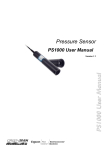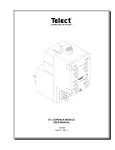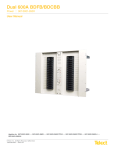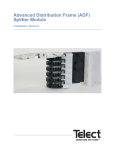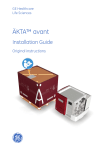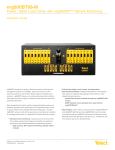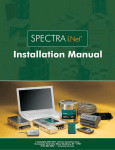Download Copper :: DS1 Series User Manual
Transcript
DSX-1 Copper :: DS1 Series User Manual BATT RTN SGND MON OUT IN T R Out NE T In R Front Cross-Connect TL Out In T R T R Applys to : DS1 Series © Telect, Inc., All Rights Reserved, 119020-1 A0 1.509.926.6000 :: telect.com DSX-1 Copper :: DS1 Series Table of Contents 1.1 Purpose and Scope��������������������������������������������������������������������������������������������������������1 1.2 Description����������������������������������������������������������������������������������������������������������������������1 1.3 Definitions�����������������������������������������������������������������������������������������������������������������������2 1.3.1 DSX Definition���������������������������������������������������������������������������������������������������������4 1.4 DSX-1 System Elements������������������������������������������������������������������������������������������������5 1.4.1 DSX-1 Panels���������������������������������������������������������������������������������������������������������6 1.4.1.1 Size����������������������������������������������������������������������������������������������������������������������6 1.4.1.2 Front Access��������������������������������������������������������������������������������������������������������6 1.4.1.3 Rear Access���������������������������������������������������������������������������������������������������������6 1.4.1.4 Jacks��������������������������������������������������������������������������������������������������������������������7 1.4.1.5 Patch Cords���������������������������������������������������������������������������������������������������������7 1.4.2 DSX-1 Bay Configuration����������������������������������������������������������������������������������������7 1.4.2.1 DC Distribution Panel�������������������������������������������������������������������������������������������7 1.4.3 Interbay Patch Panels���������������������������������������������������������������������������������������������8 1.4.4 Cross-Aisle Panels��������������������������������������������������������������������������������������������������9 1.4.5 Test Equipment�����������������������������������������������������������������������������������������������������10 1.4.6 Cables�������������������������������������������������������������������������������������������������������������������10 1.4.6.1 Cable Management��������������������������������������������������������������������������������������������10 1.5 System Issues�������������������������������������������������������������������������������������������������������������� 11 1.5.1 Balanced Line or Circuit���������������������������������������������������������������������������������������� 11 1.5.2 Unbalanced Line or Circuit������������������������������������������������������������������������������������ 11 1.5.3 Impedance������������������������������������������������������������������������������������������������������������ 11 1.5.4 Line Build-Out������������������������������������������������������������������������������������������������������� 11 1.6 Signal Characteristics��������������������������������������������������������������������������������������������������� 11 1.6.1 Digital Signal Rate Standards�������������������������������������������������������������������������������12 1.6.1.1 DS0��������������������������������������������������������������������������������������������������������������������12 1.6.1.2 T1 or DS1 Signal������������������������������������������������������������������������������������������������12 1.6.2 Signal Frames and Format Standards������������������������������������������������������������������ 12 1.6.2.1 Super Frame (D4)����������������������������������������������������������������������������������������������12 1.6.2.2 ESF��������������������������������������������������������������������������������������������������������������������12 1.6.3 Signal Shaping������������������������������������������������������������������������������������������������������12 1.6.4 Alternate Mark Inversion���������������������������������������������������������������������������������������12 1.6.5 Signal Correction—B8ZS��������������������������������������������������������������������������������������13 1.6.6 Signal Problems����������������������������������������������������������������������������������������������������13 1.6.6.1 Crosstalk������������������������������������������������������������������������������������������������������������13 1.6.6.2 Jitter�������������������������������������������������������������������������������������������������������������������13 1.6.7 Signal Losses��������������������������������������������������������������������������������������������������������13 1.6.7.1 Insertion Loss�����������������������������������������������������������������������������������������������������13 1.6.7.2 Line Loss������������������������������������������������������������������������������������������������������������13 1.6.7.3 Return Loss��������������������������������������������������������������������������������������������������������13 1.7 Signal Paths������������������������������������������������������������������������������������������������������������������14 1.7.1 Transmit and Receive Terminals and Ports����������������������������������������������������������� 16 1.7.1.1 Tip and Ring�������������������������������������������������������������������������������������������������������17 1.7.1.2 Cross-Connects�������������������������������������������������������������������������������������������������17 1.7.1.3 Terminals������������������������������������������������������������������������������������������������������������17 © Telect, Inc., All Rights Reserved, 119020-1 A0 1.509.926.6000 :: telect.com ii DSX-1 Copper :: DS1 Series 1.7.1.4 Cross-Connect Wires/Jumpers�������������������������������������������������������������������������� 17 1.7.1.5 Cross-Connect Pathways����������������������������������������������������������������������������������17 1.7.1.6 Tracer Lamps�����������������������������������������������������������������������������������������������������17 1.7.2 DSX-1 Jack Circuit������������������������������������������������������������������������������������������������18 1.7.2.1 Output Port���������������������������������������������������������������������������������������������������������18 1.7.2.2 Input Port�����������������������������������������������������������������������������������������������������������18 1.7.2.3 Monitor Port�������������������������������������������������������������������������������������������������������19 1.7.3 Interbay Patch Panels�������������������������������������������������������������������������������������������19 1.7.4 Cross-Aisle Panels������������������������������������������������������������������������������������������������19 2.1 General Considerations������������������������������������������������������������������������������������������������21 2.1.1 Future Growth�������������������������������������������������������������������������������������������������������21 2.2 DSX-1 Zone������������������������������������������������������������������������������������������������������������������21 2.2.1 Floor Plan��������������������������������������������������������������������������������������������������������������21 2.2.2 Vertical Space Allocation���������������������������������������������������������������������������������������22 2.2.3 Aisle Spacing��������������������������������������������������������������������������������������������������������22 2.2.4 Floor Loading��������������������������������������������������������������������������������������������������������23 2.2.5 Bay Footprint���������������������������������������������������������������������������������������������������������23 2.2.5.1 19” Bay���������������������������������������������������������������������������������������������������������������23 2.2.5.2 23” Bay���������������������������������������������������������������������������������������������������������������23 2.2.6 Heat Dissipation����������������������������������������������������������������������������������������������������24 2.2.7 Environment����������������������������������������������������������������������������������������������������������24 2.3 Planning Cable Traffic���������������������������������������������������������������������������������������������������25 2.3.1.1 System Rack������������������������������������������������������������������������������������������������������26 2.3.1.2 Cross-Aisle Rack�����������������������������������������������������������������������������������������������26 2.3.1.3 Line-up Rack������������������������������������������������������������������������������������������������������26 2.3.2 Floor Cabling���������������������������������������������������������������������������������������������������������27 2.3.3 Routing Cable at the DSX-1 Frame���������������������������������������������������������������������� 27 2.3.3.1 Cable Rings and Pathways��������������������������������������������������������������������������������28 2.3.4 Tie Cabling������������������������������������������������������������������������������������������������������������28 2.3.4.1 Direct Cabling����������������������������������������������������������������������������������������������������28 2.3.4.2 Zoned Cabling����������������������������������������������������������������������������������������������������29 2.4 DSX-1 Racks����������������������������������������������������������������������������������������������������������������30 2.4.1 Rack Size and Style����������������������������������������������������������������������������������������������30 2.5 Line-Up Structure����������������������������������������������������������������������������������������������������������31 2.5.1 Rack Spacing��������������������������������������������������������������������������������������������������������31 2.5.2 Maintenance Bays������������������������������������������������������������������������������������������������32 2.6 Bay Configuration���������������������������������������������������������������������������������������������������������32 2.6.1 Interbay Patch Panels�������������������������������������������������������������������������������������������32 2.6.2 Cross-Aisle Panels������������������������������������������������������������������������������������������������32 2.7 DSX-1 Panel Considerations����������������������������������������������������������������������������������������33 2.7.1 Jack Module Specifications�����������������������������������������������������������������������������������33 2.7.2 DSX-1 Jack Shields����������������������������������������������������������������������������������������������33 2.7.3 Wire-Wrap Terminations����������������������������������������������������������������������������������������33 2.7.4 Connectorized Cable Terminations����������������������������������������������������������������������� 33 2.8 DSX-1 Electrical Planning���������������������������������������������������������������������������������������������34 2.8.1 DC Power��������������������������������������������������������������������������������������������������������������34 2.8.2 AC Power��������������������������������������������������������������������������������������������������������������34 © Telect, Inc., All Rights Reserved, 119020-1 A0 1.509.926.6000 :: telect.com iii DSX-1 Copper :: DS1 Series 2.8.3 Bonding�����������������������������������������������������������������������������������������������������������������35 2.8.4 Grounding�������������������������������������������������������������������������������������������������������������35 2.8.5 Ground Window/Master Ground Bar��������������������������������������������������������������������� 35 2.8.5.1 IBN Requirements����������������������������������������������������������������������������������������������36 2.9 Cables���������������������������������������������������������������������������������������������������������������������������36 2.9.1 Balanced-Pair Cable���������������������������������������������������������������������������������������������36 2.9.2 Shielding���������������������������������������������������������������������������������������������������������������36 2.9.3 Plenum Cable�������������������������������������������������������������������������������������������������������36 2.9.4 Cross-Connects����������������������������������������������������������������������������������������������������37 2.9.5 Patch Cords����������������������������������������������������������������������������������������������������������37 2.9.6 Cable Lengths�������������������������������������������������������������������������������������������������������37 2.9.7 Connectivity Losses and Loss Budget������������������������������������������������������������������ 37 2.9.8 Line Build Out(LBO)����������������������������������������������������������������������������������������������37 3.1 Preliminaries�����������������������������������������������������������������������������������������������������������������38 3.1.1 Safety��������������������������������������������������������������������������������������������������������������������38 3.1.2 Site Preparation����������������������������������������������������������������������������������������������������38 3.1.3 Product Inspection������������������������������������������������������������������������������������������������38 3.2 The DSX-1 Bay�������������������������������������������������������������������������������������������������������������39 3.2.1 Mounting���������������������������������������������������������������������������������������������������������������39 3.2.1.1 Floor�������������������������������������������������������������������������������������������������������������������39 3.2.1.2 Frame, Overhead Support��������������������������������������������������������������������������������� 39 3.3 Power, Grounding���������������������������������������������������������������������������������������������������������40 3.3.1 Isolated Bonding Network�������������������������������������������������������������������������������������40 3.3.2 AC Power Installation��������������������������������������������������������������������������������������������40 3.3.3 Grounding and Bonding Guidelines���������������������������������������������������������������������� 41 3.4 Cabling��������������������������������������������������������������������������������������������������������������������������42 3.4.1 General Practices�������������������������������������������������������������������������������������������������42 3.4.1.1 Cable Labeling���������������������������������������������������������������������������������������������������42 3.4.1.2 Cable Coding�����������������������������������������������������������������������������������������������������43 3.4.2 Fire Stops��������������������������������������������������������������������������������������������������������������43 3.4.2.1 Fire Stop Opening and Closing�������������������������������������������������������������������������� 43 3.4.3 Vertical Direction Routing��������������������������������������������������������������������������������������43 3.4.4 Cable Butting��������������������������������������������������������������������������������������������������������44 3.4.4.1 NE Location�������������������������������������������������������������������������������������������������������44 3.4.4.2 DSX-1 Panel Location����������������������������������������������������������������������������������������44 3.4.4.3 General Procedure���������������������������������������������������������������������������������������������44 3.4.5 Cable Management at the DSX-1 Panel��������������������������������������������������������������� 44 3.4.5.1 Cable Service Loops������������������������������������������������������������������������������������������44 3.4.6 Securing Methods�������������������������������������������������������������������������������������������������44 3.4.6.1 Protecting with Fiber Material���������������������������������������������������������������������������� 44 3.4.6.2 Securing with Twine�������������������������������������������������������������������������������������������45 3.4.6.3 Nylon Cable Ties������������������������������������������������������������������������������������������������45 3.4.6.4 Tape�������������������������������������������������������������������������������������������������������������������45 3.4.6.5 Shrink Tubing�����������������������������������������������������������������������������������������������������45 3.4.7 Cable Testing��������������������������������������������������������������������������������������������������������45 3.5 Equipment���������������������������������������������������������������������������������������������������������������������46 3.5.1 DC Power Panel Installation��������������������������������������������������������������������������������� 46 © Telect, Inc., All Rights Reserved, 119020-1 A0 1.509.926.6000 :: telect.com iv DSX-1 Copper :: DS1 Series 3.5.2 DSX-1 Panel Installation���������������������������������������������������������������������������������������46 3.6 Terminations�����������������������������������������������������������������������������������������������������������������47 3.6.1 DSX-1 Circuit Assignments�����������������������������������������������������������������������������������47 3.6.2 Connecting the NE Ports��������������������������������������������������������������������������������������48 3.6.3 Shielding���������������������������������������������������������������������������������������������������������������48 3.6.3.1 Cable������������������������������������������������������������������������������������������������������������������48 3.6.3.2 DSX-1 Panel������������������������������������������������������������������������������������������������������48 3.6.4 Connecting DSX-1 Ports (Wire-Wrap)������������������������������������������������������������������ 48 3.6.4.1 Wire-Wrap Workmanship�����������������������������������������������������������������������������������49 3.6.4.2 Wire-Wrap Tools�������������������������������������������������������������������������������������������������49 3.6.4.3 Wire-Wrap Criteria���������������������������������������������������������������������������������������������49 3.6.5 Wire-Wrap Procedure�������������������������������������������������������������������������������������������51 3.6.6 Connecting DSX-1 Ports (64-Pin Telco Connector)���������������������������������������������� 52 3.6.7 DSX-1 Cross-Connect Terminations��������������������������������������������������������������������� 52 4.1 Identifying a Circuit�������������������������������������������������������������������������������������������������������54 4.2 Patching������������������������������������������������������������������������������������������������������������������������54 4.3 Retermination���������������������������������������������������������������������������������������������������������������55 4.4 Rerouting����������������������������������������������������������������������������������������������������������������������55 4.5 Testing��������������������������������������������������������������������������������������������������������������������������55 4.5.1 System Error Conditions���������������������������������������������������������������������������������������55 4.5.1.1 Jitter and Wander�����������������������������������������������������������������������������������������������55 4.5.1.2 Controlled (Frame) Slips������������������������������������������������������������������������������������55 4.5.1.3 Uncontrolled Slips����������������������������������������������������������������������������������������������56 4.5.1.4 Impulse Noise����������������������������������������������������������������������������������������������������56 4.5.1.5 Hits���������������������������������������������������������������������������������������������������������������������56 4.5.1.6 Burst Errors��������������������������������������������������������������������������������������������������������56 4.5.1.7 Bit Errors������������������������������������������������������������������������������������������������������������56 4.5.3 Monitoring�������������������������������������������������������������������������������������������������������������56 4.5.4 Line Impedance Verification����������������������������������������������������������������������������������57 4.5.5 Signal Levels���������������������������������������������������������������������������������������������������������57 4.5.6 Pulse Shape����������������������������������������������������������������������������������������������������������57 4.5.7 Loss����������������������������������������������������������������������������������������������������������������������57 4.5.7.1 Insertion�������������������������������������������������������������������������������������������������������������57 4.5.7.2 Return����������������������������������������������������������������������������������������������������������������57 4.5.7.3 Cross-Talk Coupling�������������������������������������������������������������������������������������������57 4.5.8 Maintenance Lines������������������������������������������������������������������������������������������������57 5.1 Signal Characteristics���������������������������������������������������������������������������������������������������59 5.1.1 Signal Rate�����������������������������������������������������������������������������������������������������������59 5.1.1.1 E0�����������������������������������������������������������������������������������������������������������������������59 5.1.1.2 E1�����������������������������������������������������������������������������������������������������������������������59 5.1.2 Power Level����������������������������������������������������������������������������������������������������������59 5.1.3 Symmetrical Line or Circuit�����������������������������������������������������������������������������������59 5.1.4 Asymmetrical Line or Circuit���������������������������������������������������������������������������������59 5.1.5 Balun Unit�������������������������������������������������������������������������������������������������������������59 5.1.6 Signal Losses��������������������������������������������������������������������������������������������������������59 5.1.6.1 Insertion Loss�����������������������������������������������������������������������������������������������������59 5.1.6.2 Line Loss������������������������������������������������������������������������������������������������������������60 © Telect, Inc., All Rights Reserved, 119020-1 A0 1.509.926.6000 :: telect.com v DSX-1 Copper :: DS1 Series 5.1.6.3 Return Loss��������������������������������������������������������������������������������������������������������60 5.1.7 I/O Connectors������������������������������������������������������������������������������������������������������60 5.2 Cables���������������������������������������������������������������������������������������������������������������������������61 5.2.1 Coaxial Cable��������������������������������������������������������������������������������������������������������61 5.2.2 Cable Lengths�������������������������������������������������������������������������������������������������������61 5.2.3 Cable Coding��������������������������������������������������������������������������������������������������������61 5.2.4 Line Impedance����������������������������������������������������������������������������������������������������61 5.2.4.1 Symmetrical Pair Cable�������������������������������������������������������������������������������������61 5.2.4.2 Coaxial Cable�����������������������������������������������������������������������������������������������������61 5.2.5 Coaxial Terminations���������������������������������������������������������������������������������������������62 5.2.6 Cross-Connect Wires/Jumpers����������������������������������������������������������������������������� 62 5.3 Design and Installation�������������������������������������������������������������������������������������������������62 5.3.1 Grounding and Bonding Guidelines���������������������������������������������������������������������� 62 5.3.2 Connectivity Losses and Loss Budget������������������������������������������������������������������ 62 5.3.3 Coaxial Connectors�����������������������������������������������������������������������������������������������63 5.3.4 Securing����������������������������������������������������������������������������������������������������������������63 5.4 Testing��������������������������������������������������������������������������������������������������������������������������63 5.4.1 Line Impedance Verification����������������������������������������������������������������������������������63 5.4.1.1 Symmetrical Pair Cable�������������������������������������������������������������������������������������63 5.4.1.2 Coaxial Cable�����������������������������������������������������������������������������������������������������63 5.4.2 Signal Levels���������������������������������������������������������������������������������������������������������63 5.4.2.1 75-ohm Coaxial��������������������������������������������������������������������������������������������������63 5.4.2.2 120-ohm Symmetrical Pair���������������������������������������������������������������������������������63 5.4.3 Pulse Shape����������������������������������������������������������������������������������������������������������64 5.4.4 Loss����������������������������������������������������������������������������������������������������������������������64 5.4.4.1 Insertion�������������������������������������������������������������������������������������������������������������64 5.4.4.2 Return����������������������������������������������������������������������������������������������������������������64 5.4.4.3 Cross-Talk Coupling�������������������������������������������������������������������������������������������64 © Telect, Inc., All Rights Reserved, 119020-1 A0 1.509.926.6000 :: telect.com vi DSX-1 Copper :: DS1 Series List of Figures Figure 1 - Visual example of DSX-1 functionality����������������������������������������������������������������� 2 Figure 2 - Fields in the DSX��������������������������������������������������������������������������������������������������4 Figure 3 - DSX-1 System Elements��������������������������������������������������������������������������������������5 Figure 4 - 56-Circuit DSX-1��������������������������������������������������������������������������������������������������6 Figure 5 - Rear Access Panel�����������������������������������������������������������������������������������������������6 Figure 6 - Jack����������������������������������������������������������������������������������������������������������������������7 Figure 7 - DSX-1 Bay & Fuse Panel�������������������������������������������������������������������������������������7 Figure 8 - Patch Panels��������������������������������������������������������������������������������������������������������8 Figure 9 - Patch Panels, continued���������������������������������������������������������������������������������������9 Figure 10 - Cross-aisle Panels���������������������������������������������������������������������������������������������9 Figure 11 - With and Without Cross-aisle Panels����������������������������������������������������������������� 9 Figure 12 - Cable Management������������������������������������������������������������������������������������������10 Figure 13 - DSX-1 Circuit���������������������������������������������������������������������������������������������������� 11 Figure 14 - Signal Correction����������������������������������������������������������������������������������������������13 Figure 15 - Example of DSX-1 Signal Flow������������������������������������������������������������������������ 14 Figure 16 - Second Example of DSX-1 Signal Flow����������������������������������������������������������� 15 Figure 17 - Generic Diagram of DSX-1 System Signal Flow���������������������������������������������� 16 Figure 18 - Signal Flow Paths Through a DSX-1 Jack������������������������������������������������������� 18 Figure 19 - Interbay Patch Panels��������������������������������������������������������������������������������������19 Figure 20 - Options for Signal Path������������������������������������������������������������������������������������19 Figure 21 - Line-ups������������������������������������������������������������������������������������������������������������22 Figure 22 - Cable management������������������������������������������������������������������������������������������25 Figure 23 - Cable Racks�����������������������������������������������������������������������������������������������������26 Figure 24 - Sample Cable Routing�������������������������������������������������������������������������������������27 Figure 25 - Cable Rings and Pathways������������������������������������������������������������������������������ 28 Figure 26 - Example of Zone Cabling���������������������������������������������������������������������������������29 Figure 27 - DSX-1 Racks����������������������������������������������������������������������������������������������������30 Figure 28 - Flanges�������������������������������������������������������������������������������������������������������������30 Figure 29 - Mounting-hole Patterns������������������������������������������������������������������������������������31 Figure 30 - Connecting wires����������������������������������������������������������������������������������������������41 Figure 31 - Maximum Bending Radius������������������������������������������������������������������������������� 42 Figure 32 - Standard Circuit Assignments�������������������������������������������������������������������������� 47 Figure 33 - Right and Wrong Wire-wrapping���������������������������������������������������������������������� 49 Figure 34 - Cross-Connect Terminations���������������������������������������������������������������������������� 52 Figure 35 - Example Patching Schematic��������������������������������������������������������������������������� 54 Figure 36 - I/O Connectors�������������������������������������������������������������������������������������������������60 © Telect, Inc., All Rights Reserved, 119020-1 A0 1.509.926.6000 :: telect.com vii DSX-1 Copper :: DS1 Series Chapter 1: About DSX-1 Systems 1.1 Purpose and Scope This document describes the principles of manual DSX-1 equipment interfaces, including design and installation fundamentals. This document guides the planner, engineer, and installer through the fit/form/function requirements of DSX-1 applications, offering “best practice” methods common to the industry. Information specific to E1 lines (Europe) are found in Appendix A. 1.2 Description A digital signal cross-connect (DSX) is a central terminal for digital equipment at a particular digital signal bit rate, providing both permanent and temporary connections. DSX test ports provide bridged and series access for test or patching. “Hard wire” is direct cabling between network elements (NEs). Such an arrangement has the following disadvantages: • Difficult cable management • Inadequate access for testing and monitoring • Hard to add on or rearrange, affecting circuit integrity • Possibly difficult circuit back-up in case of failure; possibly lengthy service down-time Terminating digital network equipment at a DSX-1 has these advantages over hard-wired arrangements: • The DSX-1 can handle a large number of terminations in a nonblocking arrangement. • Network equipment can be handled or coordinated efficiently, in spite of location at the site. • Grooming—adding, removing, rearranging circuit connections—is easier. • Fast service recovery and alternate routing are possible in case of NE failure. • The DSX-1 provides quick access to circuits for testing and monitoring (intrusive or nonintrusive). • Circuits can be rolled with minimal interruption of circuit integrity. • LEDs give visual indication of completed cross-connects. © Telect, Inc., All Rights Reserved, 119020-1 A0 1.509.926.6000 :: telect.com 1 DSX-1 Copper :: DS1 Series Circuit Cross-Over, Monitor, Test, and Patch DSX-1 Network Elements NOTE: 1. GENERIC ILLUSTRATION. 2. CABLE MANAGEMENT NOT SHOWN. Figure 1 - Visual example of DSX-1 functionality 1.3 Definitions Digital Signal (DS)—One of several transmission rates in the time-division multiplex hierarchy. DS1 (T1)—The digital signal rate of 1.544 Mbps, accommodating 24 voice channels. This is the signal rate handled by DSX-1 equipment. DS Equipment—System/NEs, not including DSX-1 panels. DSX-1 Panel—The individual cross-connect panel or shelf equipment, typically installed in a bay. Wall-mounted panels are possible. DSX-1 Bay—The individual rack structure that contains DSX-1 panels, associated communication panels, terminal strips, blocks, and test and maintenance equipment required for DSX-1 frame support. Cable and wire management are included with the bays. DSX-1 Frame—A generic term for one or more DSX-1 bays equipped with all necessary equipment to perform all DSX-1 functions. DSX-1 Network—Includes one or more interlinked DSX frames, at a single location, that perform all DSX-1 functions in common. A single bay could comprise the entire network. DSX-1 System—A DSX-1 network that includes all operating equipment terminated at the DSX- 1 frames, cabling, support services, planning, engineering records, assignment, and operations support. © Telect, Inc., All Rights Reserved, 119020-1 A0 1.509.926.6000 :: telect.com 2 DSX-1 Copper :: DS1 Series Digital Multiplexers (MUX)—Equipment that interfaces different bit rates to a single transmit path in the digital network. Multiplexing combines individual channels into common bit streams. Demultiplexing separates the channels out again. Tie Frames—Provide electrical access and connection points between physically separated DSX-1 frames within an office environment. T1 Span—A digital line between two offices or between an office and a remote site, run through repeater equiment. Distributing Frame—Interconnection points that provide telecommunications services to customers. Distributing frames provide termination for facilities and equipment, cross-connection, support for electrical protection devices, and test access. Decibel (dB)—A unit of measure that expresses the ratio of two voltages, currents, or powers. The dB specifies transmission loss, gain, or relative level of the digital signal. Relay Rack—A generic term for the mounting structure that contains telecommunications operating equipment. The relay rack is the base structure for the physical DSX-1 frame. Churn—A common term for connection, disconnection, and rearrangement activities at a DSX-1 frame. Roll—Move an in-service circuit to another termination with minimal effect to signal transmission. Tracer—An LED, usually called a “lamp,” that gives the user a visual indication of a successful cross-connect (completed circuit). The terms tracer, lamp, and LED, in connection with this function, are used interchangeably in this reference guide. Line-up—A frame of bays, side-by-side, in a straight line. Jumper—Cross-connect wire. © Telect, Inc., All Rights Reserved, 119020-1 A0 1.509.926.6000 :: telect.com 3 DSX-1 Copper :: DS1 Series 1.3.1 DSX Definition A DSX consists of three “fields” (connection areas)—in/out (I/O) for NE connection, cross- connect (circuit completion), and jack (monitor, patch). Figure 2 - Fields in the DSX © Telect, Inc., All Rights Reserved, 119020-1 A0 1.509.926.6000 :: telect.com 4 DSX-1 Copper :: DS1 Series 1.4 DSX-1 System Elements Figure 3 - DSX-1 System Elements DSX-1 networks are used in offices ranging from fewer than 50 to more than 10,000 DS circuits. A large DS environment can consist of several equipment frames located on several floors, separate areas, or in remote extended offices that serve a specific population center. NEs terminate at DSX-1 panels that are typically mounted in bays in the DSX frame. Such elements include fiber-optic equipment, channel banks, loop equipment, network office terminating equipment, and digital switches. The frame bays may also include patch, cross-aisle, and power-distribution panels and test equipment. © Telect, Inc., All Rights Reserved, 119020-1 A0 1.509.926.6000 :: telect.com 5 DSX-1 Copper :: DS1 Series 1.4.1 DSX-1 Panels 1.4.1.1 Size The total number of DSX jacks determines the circuit size of the panel. Most panels are designed in increments of 28. Standard configurations are 28-, 56-, and 84-circuit terminations. 14 modules with 4 DSX-1 jack assemblies each Front cross-connect wire-wrap terminals Power and ground connectors Rear wire-wrap terminals for network element IN/OUT Figure 4 - 56-Circuit DSX-1 1.4.1.2 Front Access Cross-connects and port access are at the front of the panel; the NE terminations are located at the rear. If such a panel also provides the terminations at the front, it is called a total front access (TFA) panel. 1.4.1.3 Rear Access A DSX-1 panel that provides cross-connects and NE terminations at the rear of the panel, with port access located on the front, is called a rear access panel. Tracer T O R U T Cross-Connect Fields Block 28 –48V GND 24 20 16 12 8 4 1 28 24 20 16 12 8 4 1 TRCR O T U T R TRCR T O U R T I T N R T I R N O T U T R T O U R T I T N R T I R N 28 24 20 16 12 8 4 1 28 24 20 16 12 8 4 Input/Output Fields Block Figure 5 - Rear Access Panel © Telect, Inc., All Rights Reserved, 119020-1 A0 1.509.926.6000 :: telect.com 6 1 S.GND T I R N T O R U T C.GND T I R N DSX-1 Copper :: DS1 Series 1.4.1.4 Jacks The main component of a DSX-1 panel is the jack. Panels are either fully configured with jack fields (maximum circuits), or they accommodate jack modules for an expandable number of circuits. Each jack has three ports—MON, OUT, and IN. OUT and IN consist of two 2-conductor pairs, one pair for each direction of transmission (Tip and Ring). MON provides –20 dB of paralleled isolation between the output jack and itself. Return Tracer R Out, NE T Out, NE OUT IN MON OUT R, NE R, Cross-Conn. T, NE T, Cross-Conn T, Cross-Conn. T, NE R, Cross-Conn. R, NE The input (IN) jack provides serial access to the signals going into the connected NE. The output (OUT) jack provides serial access to signals coming out from the connected NE. IN Figure 6 - Jack DC Distribution Jack fields and modules provide five cross-connect terminals. Four of these complete signal connections between NEs. The fifth is a tracer lamp terminal. Tracer lamps identify circuit routing when the tracer terminals of that circuit are connected. Horizontal Ring Panel 1.4.1.5 Patch Cords DSX-1 Panels Patch cords temporarily route digital signals during turn-up, rollover, reconfiguration, modification, and testing of a DSX-1 frame. 1.4.2 DSX-1 Bay Configuration Cable Management A bay is a 7-foot relay rack loaded with equipment. Besides DSX-1 panels, a bay may include such Rack equipment as interbay patch panels, cross-aisle panels, and test equipment. DSX-1 panel height Figure 7 - DSX-1 Bay & Fuse Panel determines the number of panels contained within a bay. One DC power distribution panel, located at the top of the bay, is normally included in the configuration. 1.4.2.1 DC Distribution Panel The distribution panel must provide enough fuse or circuit-breaker positions and load capability to support all the equipment in the DSX-1 bay. DSX-1 bay equipment is normally DC powered, but certain types of test equipment may require AC power. DSX-1 panels need DC power to operate the tracer lamps. © Telect, Inc., All Rights Reserved, 119020-1 A0 1.509.926.6000 :: telect.com DC Distribution Panel 7 DSX-1 Copper :: DS1 Series Other types of equipment, such as amplifiers and regenerators, are usually service-affecting and should be powered by a dual-feed DC distribution panel. 1.4.3 Interbay Patch Panels These provide a common patch location between the DSX-1 bays in a given DSX-1 line-up to reduce the length of the patch cords and to better manage cords that otherwise must cross an aisle to another line-up. An interbay patch panel can be considered an extension of the patch cord. A DSX-1 frame needs at least two patch panels to provide this feature. Tie cables provide the interconnection between the panels. Interbay panels and tie cables solve the problem of long patch cords and cross-aisle patching. Figure 8 - Patch Panels DSX-1 Line up Long Patch Cord Tie Cables (Illustration continues on the next page.) © Telect, Inc., All Rights Reserved, 119020-1 A0 1.509.926.6000 :: telect.com 8 DSX-1 Copper :: DS1 Series  Tie Cables in Overhead Cable Management Cross-Aisle Patch Cord Figure 9 - Patch Panels, continued 1.4.4 Cross-Aisle Panels Figure 10 - Cross-aisle Panels These panels cross-connect between DSX-1 bays that are not in the same line-up. Cross-aisle panels eliminate the need to route jumpers outside of the DSX cross-connect pathways. At least two cross-aisle panels are needed to accommodate this feature. Tie cables provide the interconnection between the two panels (wire-wrap or connectorized). Cross-aisle panels are available in both straight feed-through and cross-over feed-through connections.  Tie Cables in Overhead Cable Management With Cross-Aisle Panel Without Cross-Aisle Panel* CROSS-CONNECT WIRE ROUTING EXAGGERATED FOR CLARITY *WORST EXAMPLE; OTHER UNDESIRABLE EXAMPLES POSSIBLE Figure 11 - With and Without Cross-aisle Panels © Telect, Inc., All Rights Reserved, 119020-1 A0 1.509.926.6000 :: telect.com 9 DSX-1 Copper :: DS1 Series 1.4.5 Test Equipment Auxiliary DSX test equipment located in the frame should be capable of driving idle lines during system turn-up, and connecting unassigned and maintenance lines. The test equipment provides a controlled, error-free test signal for use during installation, troubleshooting, and stressing of span lines suspected of being marginal. 1.4.6 Cables Cables, in a variety of types, connect the network equipment to the DSX-1. Wires or “jumpers,” of different types, connect the in/out circuits of the equipment at the cross-connect terminals of the DSX-1. 1.4.6.1 Cable Management • Overhead cable racks • Retainer rings and troughs on equipment-bay racks • Wire trays, tie-down bars, routing clips, and fanning strips on panels Cable flows between the racks over transition components. 1 2 3 4 5 6 7 8 9 10 11 12 13 14 15 16 17 18 19 20 21 22 23 24 25 26 27 28 29 30 31 32 33 34 35 36 37 38 39 40 41 42 43 44 45 46 47 48 49 50 51 52 53 54 55 56 57 58 59 60 61 62 63 64 Horizontal Ring Panel Cable Routing Clips Tie-Down Bar Lineups Vertical Cable Management Partial Rack CrossConnect Wires Vertical Cable Managemen Figure 12 - Cable Management © Telect, Inc., All Rights Reserved, 119020-1 A0 1.509.926.6000 :: telect.com 10 DSX-1 Copper :: DS1 Series 1.5 System Issues 1.5.1 Balanced Line or Circuit Two balanced-pair wire connections—one pair for transmit (OUT) and one for receive (IN)— make up one DSX-1circuit. Figure 13 - DSX-1 Circuit “Balanced” means a circuit or transmission line is electrically symmetrical—the two sides of the line or circuit are equal in series resistance, series inductance, shunt capacitance, and leakage to ground. Twisted pair cable is an example of balanced cable. 1.5.2 Unbalanced Line or Circuit If the two sides of the line or circuit are not equal in series resistance, series inductance, shunt capacitance, or leakage to ground, the line or circuit is “unbalanced.” Coaxial cable is an example of unbalanced cable. 1.5.3 Impedance This is the total resistance and capacitive/inductive reactance that opposes the flow of electrical current. Equipment input load and the specified frequency determine the impedance for a given circuit. Cable design and materials determine a transmission line’s characteristic impedance. Impedance matching between the source and load is critical for maximum transfer of the digital signal. Standard line/circuit impedance is 100 ohms at 772 kHz. 1.5.4 Line Build-Out Line build-out (LBO) is intentionally attenuating the signal level, based on overall cable length. Different NE cable lengths mean signal levels through the DSX-1 would also vary, but selectable LBO (at an LBO “pad” at an NE) makes all circuits show an “equal level” (3.0V ±0.6V) as measured at the DSX-1. Equal level at the DSX-1 is an important system performance parameter. LBO can be manually controlled or controlled by software. 1.6 Signal Characteristics Voice-grade analog signals from telephone customers enter a digital terminal, such as a channel bank. The terminal produces a pulse code modulation (PCM) digital signal for each of the 24 channels at 64 kbps, in a specified format. The channel bank then multiplexes the channels onto a single T1 line at a rate of 1.544 Mbps. © Telect, Inc., All Rights Reserved, 119020-1 A0 1.509.926.6000 :: telect.com 11 DSX-1 Copper :: DS1 Series 1.6.1 Digital Signal Rate Standards 1.6.1.1 DS0 An individual time slot of 64 kbps on a DS1 signal. 1.6.1.2 T1 or DS1 Signal Digitally multiplexed channel consisting of 24 DS0s (numbered 1 through 24). Data transmission rate is 1.544 Mbps. 1.6.2 Signal Frames and Format Standards A frame is a digital signal unit containing a segment of the information coming from all 24 voice channels. Frames are 193 bits long, with 1 bit for framing “overhead” and a 1-byte block of information from each of the 24 channels (192 bits total). T1 transmits 8,000 frames per second, resulting in the 1.544 Mbps specification. There are two major frame format standards for T1 transmissions—D4 (Super Frame) and Extended Super Frame (ESF). 1.6.2.1 Super Frame (D4) D4 has a 12-frame structure. The first bit in each frame is the framing bit, which identifies the channel and the signaling frame. 1.6.2.2 ESF ESF extends the D4 12-frame structure to 24 frames. Framing bits may be used for framing, error detection, or network control information. This format permits higher levels of error checking and maintenance within the T1/ DS1 signal. 1.6.3 Signal Shaping For 100-ohm terminations, all signals coming into a DSX-1 frame are 3V base-to-peak, +0.6V. The pulse imbalance is less than 0.5 dB between the total power of the positive pulses and the negative pulses. 1.6.4 Alternate Mark Inversion T1 signaling uses alternate mark inversion (AMI), a line code that represents binary ones by signals that alternate between positive and negative polarity and are of equal amplitude. Binary zeros are represented by signals of zero amplitude (0 volts). An occurrence of two or more adjacent pulses of identical polarity is a bipolar violation (BPV). © Telect, Inc., All Rights Reserved, 119020-1 A0 1.509.926.6000 :: telect.com 12 DSX-1 Copper :: DS1 Series 1.6.5 Signal Correction—B8ZS An excessive amount of zeroes (15 or more) in the T1 data bit stream can cause loss of the system’s timing synchronization. The bipolar 8-zero substitution (B8ZS) coding scheme replaces each block of eight consecutive zeros with a “code word,” also eight bits long, that intentionally inserts two BPVs. This scheme transmits enough “ones” to maintain timing, yet the BPVs alert the system that the code-word byte is not genuine data. Lead Pulse “+” BPV BPV BPV Lead Pulse “–” Code Word Figure 14 - Signal Correction 1.6.6 Signal Problems 1.6.6.1 Crosstalk Crosstalk is the unwanted coupling of a signal from one circuit to an adjacent signal on a separate circuit. The result is the faint speech or tone heard in one (disturbed) circuit, coming from the adjacent (disturbing) circuit. To minimize the effect of crosstalk, DSX-1 networks are designed so that a disturbing signal is at least 60 dB below the desired signal. 1.6.6.2 Jitter Jitter is a variation or oscillation of pulse spacing in an otherwise regular digital signal. A DSX-1 frame with proper signal levels and matched impedance will not contribute to this effect. 1.6.7 Signal Losses 1.6.7.1 Insertion Loss This is the total loss created by the terminal connections at the DSX-1 panel and the DSX-1 jack assembly at half line rate (772 kHz). Insertion loss must be less than 0.5 dB. 1.6.7.2 Line Loss The total signal loss between equipment terminations, including all components of the DSX-1 frame, in each direction of transmission, should not exceed 6 dB at half-line rate (772 kHz). 1.6.7.3 Return Loss The sum of reflected losses at half line rate (772 kHz) must be less than 26 dB, measured at the output test port. © Telect, Inc., All Rights Reserved, 119020-1 A0 1.509.926.6000 :: telect.com 13 DSX-1 Copper :: DS1 Series 1.7 Signal Paths This is an overview to give a sense of DSX-1 signal flow. The following illustrations give a more specific example, as you might see at a telecom network site. Figure 15 - Example of DSX-1 Signal Flow © Telect, Inc., All Rights Reserved, 119020-1 A0 1.509.926.6000 :: telect.com 14 DSX-1 Copper :: DS1 Series DLC COT ODF FOT OC-N LEC CLEC HI-CAP HDSL OTR MDF Digital loop carrier, central office terminal Optical distribution frame Fiber optic terminal Optical carrier-[number] Local exchange carrier Competitive local exchange carrier High capacity High-bit-rate digital subscriber line Office terminating repeater Main distribution frame Figure 16 - Second Example of DSX-1 Signal Flow © Telect, Inc., All Rights Reserved, 119020-1 A0 1.509.926.6000 :: telect.com 15 DSX-1 Copper :: DS1 Series 1.7.1 Transmit and Receive Terminals and Ports These establish the path direction for the signals to be connected to the DSX-1 frame. The in and out terminals of the DSX-1 are extensions of the network element (NE)—“in” at the DSX-1 is the same as “in” at the NE; the same is true for “out.” The following illustration generically diagrams signal flow in a DSX-1 system. Figure 17 - Generic Diagram of DSX-1 System Signal Flow © Telect, Inc., All Rights Reserved, 119020-1 A0 1.509.926.6000 :: telect.com 16 DSX-1 Copper :: DS1 Series 1.7.1.1 Tip and Ring Tip and Ring, commonly called T and R, are the conductors in single-pair DSX-1 circuits. In balanced twisted pairs, the Tip wire is the first of the pair; Ring is the second. 1.7.1.2 Cross-Connects The input and output terminals must be “rolled” or electrically crossed over to complete a circuit path. Cross-connect terminals at the DSX-1 accomplish this. Connecting the output of a circuit to the respective input of another completes the transmit and receive loop. 1.7.1.3 Terminals A cross-connect terminal, located on either the front or rear of the DSX-1, is an extension of the T or R of the input or output terminal. If no jack plug is in the input or output ports, wire pairs or jumpers connect the cross-connect terminals directly to the NE’s associated input/output terminals at the DSX-1. 1.7.1.4 Cross-Connect Wires/Jumpers DSX-1 jumpers consist of five wires—two pairs for cross-over connections and a single wire for the tracer lamps. The maximum length of cross-connect wires is 85 feet (25.9m) for 24-gauge balanced pair wire (recommended). 1.7.1.5 Cross-Connect Pathways These are routing methods for cross-connection wires/jumpers. The pathway is formed by DSX-1 panel trays, retaining rings, and cable routing devices that control the direction and location of the cable or wire. 1.7.1.6 Tracer Lamps Tracer lamps or LEDs provide a visual identification of cross-connect circuit paths within a frame. The LEDs or lamps come in various colors to identify a particular network equipment’s termination. A single wire connecting the tracer terminals of two DSX-1 circuits makes half a tracer lamp circuit. A plug inserted into either MON jack completes the circuit, causing the lamps at both ends to light. Some units are equipped with LEDs that flash for 30 seconds and then light steadily. © Telect, Inc., All Rights Reserved, 119020-1 A0 1.509.926.6000 :: telect.com 17 DSX-1 Copper :: DS1 Series 1.7.2 DSX-1 Jack Circuit This illustration shows the signal flow paths through a DSX-1 jack. Figure 18 - Signal Flow Paths Through a DSX-1 Jack 1.7.2.1 Output Port This is an intrusive connection point that interrupts the DS1 signal from the NE upstream of the signal path. This port is used for establishing signal levels coming to the DSX-1 frame as well as for testing, patching, and rerouting the digital signal. 1.7.2.2 Input Port This is an intrusive connection point that interrupts the DS1 signal to the NE downstream of the signal path. This port is used for testing, patching, and rerouting the digital signal. © Telect, Inc., All Rights Reserved, 119020-1 A0 1.509.926.6000 :: telect.com 18 DSX-1 Copper :: DS1 Series 1.7.2.3 Monitor Port Inserting a jack into a test port OUT of single monitor ports, OUT or IN of dual monitor ports— accesses –20 dB of the signal present at the port and sends it to the test port contacts. A jack insert also completes the tracer lamp circuit and lights the tracer LEDs. 1.7.3 Interbay Patch Panels These panels reduce the length of needed patch cords by serving as an intermediate terminal point between bays or line-ups. Each DSX-1 circuit patches to the nearest interbay patch panel. The two panels connect by tie cable. NE1 Interbay Patch DSX-1 Interbay Patch NE2 DSX-1 OUT OUT IN IN Tie Cables Patch Cords Patch Cords NOTE: ONE CROSS-CONNECT, AT EITHER DSX-1 Figure 19 - Interbay Patch Panels 1.7.4 Cross-Aisle Panels These panels help maintain proper jumper-wire management by serving as an intermediate terminal point between line-ups. Each DSX-1 circuit cross-connects to the nearest cross-aisle panel. The two panels connect by straight-through tie cable arranged in cable management hardware. The following illustration shows the two options for half of the signal path; cross-connection is made at one DSX. NE1 CrossAisle CrossAisle DSX-1 OUT DSX-1 NE1 OUT IN IN Tie Cables Optional Paths (choose one, not both) Figure 20 - Options for Signal Path © Telect, Inc., All Rights Reserved, 119020-1 A0 1.509.926.6000 :: telect.com 19 DSX-1 Copper :: DS1 Series This page intentionally left blank. © Telect, Inc., All Rights Reserved, 119020-1 A0 1.509.926.6000 :: telect.com 20 DSX-1 Copper :: DS1 Series Chapter 2: DSX-1 System Design 2.1 General Considerations The DSX-1 network should be flexible and able to handle present and future needs. The DSX-1 system must interface with different DSX-1 frames and technologies. The DSX-1 frame must be able to interact with any other type of identical bit-rate DSX-1 frame regardless of operation (manual, partially automated, fully automated) or location. The DSX-1 network must address transmission levels between the DSX-1 frames, transmission pathways, total interconnection flexibility, as well as the location and installation of the DSX-1 frames that make up the DSX-1 network. DSX-1 systems can be installed in a new office environment or into an existing DSX-1 network environment. For offices without a DSX-1 system, the main design criteria depends on the physical restrictions of the office environment. 2.1.1 Future Growth The ability of the DSX-1 frames and support systems to integrate growth without major rearrangement determines the long-term success of the DSX-1 network. Designing the DSX-1 system for future needs is a must when considering modular or incremental growth. Growth can be greatly constrained by the existing office environment and current DSX-1 system installation. 2.2 DSX-1 Zone A DSX-1 zone is an identifiable area within the site that is dedicated to DSX-1 line-ups and the network element (NE) line-ups that connect to them. How to locate and arrange line-ups depends on the equipment to be used and the cabling relationship between line-ups and other zones. 2.2.1 Floor Plan Use a floor plan to determine the best location for the DSX-1 frame in relation to the NEs. Locate the frame within the cable length limits of the NEs. © Telect, Inc., All Rights Reserved, 119020-1 A0 1.509.926.6000 :: telect.com 21 DSX-1 Copper :: DS1 Series 2.2.2 Vertical Space Allocation The following guidelines are based on the assumption of a 10 ft. (304.8 cm) or more ceiling: • 7 ft. (213.4 cm) equipment racks • 1 ft. (30.5 cm) clearance between the top of the bay and the line- up cable management rack • 1 ft. (30.5 cm) clearance between the line-up cable management rack and the cross-aisle cable management rack • 1 ft. (30.5 cm) clearance between the cross-aisle rack and the system/power cable management rack 2.2.3 Aisle Spacing The site may already have specifications for zone aisle widths. If it does not, consider these guidelines. For most DSX-1 panels (circuit connections at both the rear and the front), typical aisle widths (measured between the guard boxes) are: • front (“maintenance”)—2.5 to 3 ft. (76.2 to 91.4 cm) wide • rear (“wiring”)—2 to 2.5 ft. (61 to 76.2 cm) wide • main traffic aisles. Within the zone, these should be at least 3 ft. (91.4 cm). The rear of parallel line-ups should face each other across wiring aisles and the fronts should face each other across maintenance aisles. Figure 21 - Line-ups © Telect, Inc., All Rights Reserved, 119020-1 A0 1.509.926.6000 :: telect.com 22 DSX-1 Copper :: DS1 Series 2.2.4 Floor Loading The site may already have a specification for site-floor loading. If it does not, follow this guideline: The floor should be able to support 150 lb/ft.2 (732 kg/m2). This weight allocation comprises loaded bay (rack plus equipment), cables, and miscellaneous weight. Determine the square footage for weight distribution this way: Rack Width x Total Depth (Total depth = rack depth + half of aisle width in front of rack + half of aisle width behind rack) The actual weight of a typical 7 ft. bay fully loaded comes to about 525 lb (238.1 kg). 2.2.5 Bay Footprint The racks mentioned below are illustrated on page 30. 2.2.5.1 19” Bay “Channel” type racks: 20.3 in. x 15.0 in. (51.6 cm x 38.1 cm). 2.2.5.2 23” Bay “Channel” type racks, all heights: 24.3 in. x 15.0 in. (61.7 cm x 38.1 cm). “Unequal flange” type racks: 24.3 in. x 15.0 in. (61.7 cm x 38.1 cm). “Network” type racks: 25.9 in. x 12.0 in. (65.8 cm x 30.5 cm). © Telect, Inc., All Rights Reserved, 119020-1 A0 1.509.926.6000 :: telect.com 23 DSX-1 Copper :: DS1 Series 2.2.6 Heat Dissipation The site may already have specifications for heat dissipation. If it does not, follow these guidelines: • A single bay should not exceed 120W/ft.2 (1.72 kg-cal./min. per ft.2). You may have to decrease the amount of equipment in a bay if anticipated heat dissipation exceeds the specification. • To determine heat dissipation (in BTUs) for the planned equipment, divide the estimated heat release for the entire bay by the same square footage you determined for floor loading in the previous subsection. • To calculate total BTUs: BTUs = watt-hours x 3.4126 watt-hours = (It x Vplant)0.005 + 1, where It = constant current pulled by load Vplant = plant voltage (typically 52–54V) 0.005 = 0.5% of total power dissipated by load 1 = total watts consumed by DSX-1 panel with 84 LEDs Example: watt-hours = (1A x 53)0.005 +1 watt-hours = (53 x 0.005) + 1 = 1.265, where 1A = total amperage if all LEDs were lit at same time 53 = 53 Vdc plant voltage 0.005 = actual watt-hours (half of calculated value) BTUs = 1.265 x 3.4126 = 4.3 2.2.7 Environment Temperature: 0 to 50°C (32 to 122°F). Relative humidity: 5-95%, noncondensing. © Telect, Inc., All Rights Reserved, 119020-1 A0 1.509.926.6000 :: telect.com 24 DSX-1 Copper :: DS1 Series 2.3 Planning Cable Traffic Effective cable management is crucial to a well-organized zone. DSX-1 frames should consist of DSX bay equipment that meet the same physical cabling format. • Cable distances should be as short as possible, yet cable traffic must be designed to avoid congestion, mixed cable types, and blocking of vents, lights, or fire safety devices. • If possible, do not route cable through zones in which it does not terminate. • Equipment that must connect between floors may need to be located close to cable holes in ceiling and/ or floor. • High-density DSX-1 panels can require up to three times the cable capacity as standard DSX-1 panels. See page 36 for a discussion of cable characteristics and specifications. Figure 22 - Cable management © Telect, Inc., All Rights Reserved, 119020-1 A0 1.509.926.6000 :: telect.com 25 DSX-1 Copper :: DS1 Series Figure 22 - Cable management These ladder-like units route and supply cable to the bays from overhead. Figure 23 - Cable Racks 2.3.1.1 System Rack This rack carries power and plant cable to different zones within a facility. It is supported from the floor. Limit system racks to three per zone. To make cable routing changes easier, plan to layer cable in the rack no deeper than 6 inches (15.2 cm). 2.3.1.2 Cross-Aisle Rack This rack directs cable to line-ups within the same zone and perhaps serves as an auxiliary for the system rack. The bay supports the cross-aisle rack with stand-off devices. Cable cascades down to it from the system rack. Space these racks 5 ft. (152.4 cm) apart, measured from the center, and plan bay supports every 5 ft. These racks should be reinforced with floor supports where lengths exceed 5 ft. without bay support. 2.3.1.3 Line-up Rack This rack manages the cable that terminates in the line-up. The bay supports the rack with stand- off devices. Cable cascades down to it from the cross-aisle rack. © Telect, Inc., All Rights Reserved, 119020-1 A0 1.509.926.6000 :: telect.com 26 DSX-1 Copper :: DS1 Series Plan to offset rack location in the direction of the maintenance aisle so that cable has a straight drop to the top of the bay when it flows down from the inside edge of the rack to the line-up. NOTE: Coming off the cable rack edge, rather than dropping straight down from a rung in the rack, gives less stress and bend to the cable. 2.3.2 Floor Cabling Some sites route cables in spaces underneath floor panels, bringing the cables up from the bottom of the frame. 2.3.3 Routing Cable at the DSX-1 Frame NOTE: Cable groups should not mix digital transmission rates. Split DSX-1 transmission cables into two groups, one group consisting of the “out” cables and the other group consisting of the “in” cables. Divide these groups along the entire cable path between the NE and the DSX-1 frame, including the vertical paths alongside the DSX-1 bays (out cables on one side of the bay, in cables on the other side). Dividing the out and in cables reduces electromagnetic interference and promotes a simpler installation. Cabling between bay line-ups require cross-aisle panels. © Telect, Inc., All Rights Reserved, 119020-1 A0 1.509.926.6000 :: telect.com Figure 24 - Sample Cable Routing 27 DSX-1 Copper :: DS1 Series 2.3.3.1 Cable Rings and Pathways Provide cable pathways for all in/out cables, cross-connects, cross-aisle panels, and interbay patch panels. To calculate the needed size, assume a density of 160 pairs or 64, 5-wire conductors of 24-gauge wire per square inch. Allow a 15% margin for extra cable. Horizontal ring panels typically hold jumpers that run on horizontal pathways; a bridge ring panel is used for horizontal travel across spacers in multiple rack line-ups. Vertical ring assemblies manage cable for jumpers running up or down the DSX-1 bay. • Pathways cannot interfere or obstruct access to apparatus, terminations, or designation markings. • The pathway must permit inspection and maintenance of the existing terminations and not interfere with the addition of new terminations. • A pin, ring, or other wire-retaining device must be provided at each point where the jumper pathway bends or turns. • At points where the jumpers come in contact with shelf or bay edges, the contact point must be covered with a durable insulation material of at least a 1000 megaohms. Figure 25 - Cable Rings and Pathways 2.3.4 Tie Cabling Tie cables route above the line-ups in a cable rack system. They solve the problem of long patch cords across the face of the frame, long cross-connect jumpers, or cords/jumpers that would otherwise have to stretch across aisles, blocking human traffic. They do not extend the 85 ft. length limit; rather, their use and length must be considered within the limit. Cross-aisle tie cabling follows one of two schemes; the one you choose depends on site complexity, telco standards of the site, and possibly equipment manufacturer specifications for use: 2.3.4.1 Direct Cabling Tie The DSX-1 patches to a cross-aisle panel in the same bay. The panel connects by tie cable to another panel, which is also in the same bay as the DSX-1 to which it patches. These bays have the same number in their line-up. DSX-1 DSX-1 Aisle Bay 1 © Telect, Inc., All Rights Reserved, 119020-1 A0 1.509.926.6000 :: telect.com 28 Bay 1 DSX-1 Copper :: DS1 Series 2.3.4.2 Zoned Cabling A single 22- or 23-bay line-up might occupy two or more zones, but the bays are still numbered in straight sequential order. Zone cabling not only patches the same-numbered bays of different line-ups within the same zone, but also equivalent-position bays in different zones. The following figure is a simplified example of zone cabling. Figure 26 - Example of Zone Cabling © Telect, Inc., All Rights Reserved, 119020-1 A0 1.509.926.6000 :: telect.com 29 DSX-1 Copper :: DS1 Series 2.4 DSX-1 Racks Relay racks are available in a variety of styles, shapes, physical dimensions, and mounting-hole spacing. They are the base structure for the physical DSX-1 frame. Choice of one over the others is based on site needs and the nature of existing line-ups. Cross-Connect Wire Channel Channel Racks Relay Rack In/Out Cable Channel 2.4.1 Rack Size and Style Rack widths are 19” (48.3 cm) or 23” (58.4cm). Rack equipment is designated as accommodating one or both of these widths. Rack height is typically 7 ft. (213.4 cm) but certain racks can be higher (requiring ceiling heights greater than 10 ft.). Floor Supported Front and back rack flanges are “equal” in size on channel racks and “unequal” on relay racks. Overhead Supported Figure 27 - DSX-1 Racks Figure 28 - Flanges © Telect, Inc., All Rights Reserved, 119020-1 A0 1.509.926.6000 :: telect.com 30 DSX-1 Copper :: DS1 Series Mounting-hole spacing pattern in the rack conforms to either the EIA or WECO standard. Figure 29 - Mounting-hole Patterns Keep all racks in a DSX-1 frame the same height. Do not mix rack styles—problems can occur, such as bad alignment and ancillary product mismatch. Seismic-rated racks are required for telecommunications equipment in earthquake zones. 2.5 Line-Up Structure Constraints and requirements of cable traffic are a factor in determining line-up placement and structure. An industry standard is a maximum of 23 bays in a single line-up. The number of possible terminations in any line-up depends on the density offered by the DSX-1 equipment. As you plan NE/DSX-1 configurations within the line-up, remember that the maximum length for cross-connect jumpers is 85 feet (25.9m). 2.5.1 Rack Spacing Proper rack spacing within the line-up helps accommodate and protect the cables. Spacers, which provide room for the equipment cables between the DSX-1 bays, are available in widths ranging from 2 to 7 inches (5.1–17.8 cm). Choose a spacer width that accommodates the entire amount of cables needed for present and future growth. The amount of cable area is the vertical space alongside the vertical risers where cable can reside. End panels are used at the right and left ends of the DSX-1 bay line-ups for cable protection. They can also be used in the middle of a line-up to segregate different DSX frames. © Telect, Inc., All Rights Reserved, 119020-1 A0 1.509.926.6000 :: telect.com 31 DSX-1 Copper :: DS1 Series 2.5.2 Maintenance Bays A maintenance bay holds a variety of miscellaneous equipment. Possible items could include a communication panel, patch panels, backup panels, and test equipment. Every fourth bay is a maintenance bay in a typical 23-bay line-up. 2.6 Bay Configuration A typical bay includes fuse panel and DSX-1 equipment. It could also include ring panels for horizontal wire management, interbay patch panel, cross-aisle panel, and miscellaneous jack field. The fuse panel and any cross-aisle panel go in the topmost rack unit (RU) spaces in the bay. The system designer can arrange all remaining equipment in the bay in a manner that makes the most sense for the site and system plan. 2.6.1 Interbay Patch Panels These panels can be located in a DSX-1 bay or in a maintenance bay. Two panels are needed to complete a full patching circuit. Panels should have a minimum of 28 circuits. This provides the ability to patch the equivalent of a T3 circuit. 2.6.2 Cross-Aisle Panels These panels can be located in a DSX-1 bay or in a maintenance bay. Two panels are needed to complete a full patching circuit. A typical site could have about 25% of the circuit cross-connects going to another line-up. © Telect, Inc., All Rights Reserved, 119020-1 A0 1.509.926.6000 :: telect.com 32 DSX-1 Copper :: DS1 Series 2.7 DSX-1 Panel Considerations 2.7.1 Jack Module Specifications Characteristic Insertion Loss Resistance Specification Insertion loss for DSX-1 jack contacts is ≤0.1 dB. Contact resistance is ≤10 milliohms for metal surface contacts. Open resistance is ≥10 megaohms. Contact Wipe C-type contact configuration, which provides 0.005 to 0.008 inch of travel to the contact surfaces when closing. Contact Current Ratings 200 mA continuous, 2A peak for 10 seconds. Impedance 75, 100, and 120 ohms of characteristic impedance, balanced and unbal- anced circuits. Insulation Resistance Between any two terminals, ≥ 1000 megaohms at DC voltages up to 500V. Crosstalk At least 60 dB below desired signal. Insert/Withdraw Force About 4.17 lb for insertion, 5.21 lb for withdrawal. Life Cycle 10,000 insertions and withdrawals (typical). Humidity Up to 95%, operating and nonoperating. Thermal Limits -40°C to +65°C (-40°F to +149°F) for normal operation and -55°C to +85°C (-67°F to +185°F) for nonoperating or storage. 2.7.2 DSX-1 Jack Shields Normally, a single-ended shield connection is provided with the DSX-1 panel for shielding that can be extended through the jack field. Connecting the jack field shield to the frame ground of the bay extends the shielding through the jacks and does not violate the Isolated Bonding Network (IBN) scheme. (See section 2.8, “DSX-1 Electrical Planning.”) 2.7.3 Wire-Wrap Terminations Standard wire-wrap terminations are 0.045-inch-square brass pins with nickel plating. There are five terminals for cross-connects—two pairs for the Tip and Ring cross-over connections and a single connection for the tracer lamp. 2.7.4 Connectorized Cable Terminations DSX-1 (and NE) terminations are available for AMP-type, twisted-wire-pair connectors. Connectorized cables make it easy to install, organize, and test cable. These types of terminations can inhibit the flexibility of equipment terminations at the DSX-1 frame but greatly decrease the amount of installation time. © Telect, Inc., All Rights Reserved, 119020-1 A0 1.509.926.6000 :: telect.com 33 DSX-1 Copper :: DS1 Series 2.8 DSX-1 Electrical Planning 2.8.1 DC Power The DC distribution panel, located at the top of each DSX-1 bay, should have enough fuse positions to accommodate every piece of equipment that requires power from the bay. Each position must have the proper fuse and wire rating for the equipment to be powered. To determine the maximum input amperage needed to fully operate the equipment within a bay, add the maximum load amperage for each piece of equipment. Refer to Telect’s Secondary DC Distribution Reference Guide, part number 118101. (Contact Telect for a copy.) When combining a DC electrical circuit with an IBN, take care to not violate the grounding design. NOTE: Based on information from the National Electric Code and such agencies as Underwriters Laboratories, Telect recommends that panels or shelves be individually fused, not daisy-chained or paralleled to a single fuse distribution point. If the equipment is paralleled, the maximum fuse size that can be used is the smallest value determined by a single panel. 2.8.2 AC Power • AC power feeds must consist of a three-wire conductor, with one of the conductors providing ground. • Space for AC electrical receptacles and associated wiring must be provided at the base of each DSX-1 bay. One standard duplex AC receptacle must be provided every 41⁄2 feet (137.2 cm) of frame length or every third bay, for AC-powered equipment. • AC receptacles must have the grounding terminal connected to mounting hardware. Do not use insulated terminal receptacles. • AC receptacles should be properly installed and contained in an approved junction box. • Plan to run all AC conductors in jacketed flexible conduit for a secure and safe installation. • When combining an AC electrical circuit with an IBN, take care to not violate the grounding design. • AC electrical circuits installed as part of the DSX-1 frame must conform to all local electrical codes and to the latest issue of the National Electric Code. NOTE: Electrical devices such as AC drill motors that produce large amounts of electrical noise should not be used around the DSX-1 frame. © Telect, Inc., All Rights Reserved, 119020-1 A0 1.509.926.6000 :: telect.com 34 DSX-1 Copper :: DS1 Series 2.8.3 Bonding Bonding ensures that all dead metal parts are electrically connected with less than 0.1 ohm resistance between the grounding lug and the dead metal. Use special bonding screws that ensure electrical conductivity between the dead metal parts. All subsystems, such as panels and other DS equipment located within a bay, should be bonded to the relay racks through the mounting ears. This requires the use of paint-breaking devices, such as star washers, to ensure electrical fault current paths. In addition, all equipment located within a bay should be properly grounded with a bonding jumper between the chassis ground terminals and the relay rack. 2.8.4 Grounding Ground systems in an office environment are a very critical part of the equipment installation. Proper grounding ensures personnel safety, equipment protection and proper operation, noise reduction, and reliability. There are two types of grounding methods, which are used separately or in conjunction with each other— Integrated Grounding Network (IGN) and Isolated Bonding Network (IBN). The IGN is the basic ground system that exists between the AC primary earth ground and all associated conductive parts of the building. Refer to CBN CCITT recommendation K.27: GR-1089-CORE issue 2, Dec. 1997, Section 9.2.1. The IBN is a dedicated single-point ground system that is used in conjunction with isolated DS equipment frames. IBN provides a selective fault-current path within the ground system. Refer to Isolated Bonding Network (IBN CCITT recommendation K.27): GR-1089-CORE issue 2, Dec. 1997, Section 9.2.2. The main difference between IBN and IGN is that no current flows in an IBN other than electrical noise currents and temporary short-circuit fault currents. During a frame-fault current, the IBN network allows a least-resistance path through the ground-conducting path, ensuring quick interruption of the fault current while keeping voltage potentials to a minimum. Current from a lightning strike is shunted through the IGN and around the IBN, reducing the high-voltage potentials that can cause insulation breakdown. With the single-point ground terminations disconnected from the ground window, the insulation resistance between the IBN and the IGN should be 100 mega ohms or greater. For information on proper grounding methods see Bellcore TR-NWT-00295 Issue 2, July 1992, Isolated Ground Planes. 2.8.5 Ground Window/Master Ground Bar The ground window is the interface point between the building’s IGN and the AC/DC grounding conductors included in the IBN. This transition zone is a sphere with a maximum radius of 3 feet (91.4 cm). IBN conductors, after passing through the window, must be insulated and isolated from the IGN. © Telect, Inc., All Rights Reserved, 119020-1 A0 1.509.926.6000 :: telect.com 35 DSX-1 Copper :: DS1 Series 2.8.5.1 IBN Requirements All DSX-1 frames that are part of the IBN must be insulated from the common bonding network. Typical fastening points that require insulation include anchor bolts, bottom of bays, superstructure supports, lighting fixtures, and other hardware. The insulating material must have a dielectric strength not less than that of nylon (400 volts/mil). 2.9 Cables Cables must meet the electrical, mechanical, and flammability ratings as described in the most recent issue of the National Electric Code, Article 800, Communications Circuits. Cables must also be listed with a Nationally Recognized Test Laboratory (NRTL) for other compliance ratings. Choose DSX-1 cables that meet these minimum electrical characteristics: Voltage Rating 300V Nominal Impedance 100 ohms +5% at 772 kHz Line Loss No greater than 6 dB per 1000 feet at 772 kHz Far-End Crosstalk Better than 90 dB per 1000 feet at 772 kHz Near-End Crosstalk Better than 85 dB per 1000 feet at 772 kHz ! ALERT ALERT! Failure to use electrically compliant DSX-1 cables may cause transmission errors, bipolar violations, crosstalk, and loss of signal strength. 2.9.1 Balanced-Pair Cable Balanced-pair cable, commonly known as twisted-pair cable, is available in a variety of wire gauges and pair sizes, in bare copper or tinned, and with fire and electrical safety ratings. Tin plated conductor wires reduce oxidation and provide long-term reliability of solderless wire-wrap terminations. Common wire sizes are 22, 24, and 26 AWG. DSX-1 frame cables are jacketed bundles in a variety of sizes, consisting of binder groups from 4 to 808 pairs (AT&T 600B and 600C series). See “Standard Multipair Color Code,” in the installation chapter. 2.9.2 Shielding Shielding is important to the digital transmission scheme. Proper shielding practices allow the inherent capacitance and inductive reactance of the cables to reduce electrical noise. Shield grounding at one end—preferably the network element (NE)—prevents incidental ground loops that can carry fault currents within a given frame. 2.9.3 Plenum Cable This cable is made with slow-burning and low-smoke materials (specifically fluoropolymers). It is run in plenum air spaces such as cable troughs and racks or above ceiling tiles. Plenum cables are a common requirement in installations; refer to the local electrical codes. © Telect, Inc., All Rights Reserved, 119020-1 A0 1.509.926.6000 :: telect.com 36 DSX-1 Copper :: DS1 Series 2.9.4 Cross-Connects Standard cross-connect wire comes in nonjacketed, 24-gauge, 5-wire, tinned twisted-pair conductors—two twisted-wire pairs for each direction of transmission and a single wire for the tracer lamp circuit. Cross-connect wire comes in various wire colors for circuit identifications. 2.9.5 Patch Cords Bantam-style jacks are standard in the telecommunications industry. 2.9.6 Cable Lengths The following standard cable lengths have been determined to minimize crosstalk and help ensure adequate signal strength to the digital equipment: • The cable between a DSX-1 and a NE must be 22 AWG, ABAM, or Level 2 type. Maximum distance is 655 ft. (199.6m). • Cross-connects between DSX-1’s—this includes cross-aisle circuits— must be 24 AWG, 5- conductor wire. Maximum distance is 85 ft. (25.9m). • The maximum distance from NE to DSX-1 cross-connected to another DSX-1 to another NE is 1395 ft. (425.2m). 2.9.7 Connectivity Losses and Loss Budget As you plan your DSX-1 circuits, consider that the maximum allowable equipment-to-equipment signal loss is 6 dB. This is your “available loss budget,” and it is depleted by the DSX-1 equipment and components, according to their dB loss rating. You must consider all theseloss sources: • cable type and length • cable connectors (out/in, cross-connects, cross-aisle panels) • jack insertion Following are the loss characteristics of standard, twisted-pair cable: Wire Size (AWG) Ohms Per Foot Equipment to Frame (ft.) Cross- Connect Equipment to Equipment (ft.) 22 0.017 655 85 ft. 1394 24 0.027 2.9.8 Line Build Out You need to design line build out (LBO) based on cable lengths and inherent signal attenuation to achieve equal voltage level at the DSX-1. Typical attenuation levels that you can set at the LBO pad on the NE are 0.0, 7.5, and 15.0 dB at 772 kHz. © Telect, Inc., All Rights Reserved, 119020-1 A0 1.509.926.6000 :: telect.com 37 DSX-1 Copper :: DS1 Series Chapter 3: DSX-1 Installation Guidelines 3.1 Preliminaries DSX-1 installation guidelines are important. Most of the instructions are points to remember, rather than specific, step-by-step procedures. You must depend on all existing installation reference information. Table 2 - Installation Reference Information Information Source Pertains To... Job Site Specifications All aspects of site preparation and installation. Operating Company Rules, Regulations, Guidelines All aspects of site preparation and installation. Equipment User Documents Proper install of specific bay equipment. Telect’s Secondary DC Distribution Technical Reference Guide DC power distribution to bay equipment; electrical grounding rules and techniques. National Electric Code Rules, regulations, and procedures of site and equipment power supply and grounding. Also, cable labeling and coding. Manufacturer’s Specifications Special instructions for installing, protecting, and servicing a specific product or its components going into the bay. Bellcore GR-1275-CORE; Bellcore practices Specific grounding and bonding information; cable securing methods. Review all available information before installation. Verify you have all tools and all components necessary for each phase of the installation. 3.1.1 Safety Observe OSHA regulations (USA) while preparing the site and installing the equipment. 3.1.2 Site Preparation Points to remember: • Verify that equipment spatial requirements and cable routing space has been determined for the installation. • Verify all requirements for cable lengths, DC power, and AC power have been met. • Establish the point-to-point termination connections within the site. 3.1.3 Product Inspection After unpacking it, inspect the equipment for any shipping damage, defects, or missing parts. Keep all documentation shipped with the equipment. Inventory the equipment. © Telect, Inc., All Rights Reserved, 119020-1 A0 1.509.926.6000 :: telect.com 38 DSX-1 Copper :: DS1 Series 3.2 The DSX-1 Bay Relay racks that make up the bays should be consistent in design, shape, and style. This provides a uniform and simple installation. Mount individual bays as straight and level with the frame line-up as possible. Allow enough space between bays, using spacer kits, to provide adequate room for all cables. 3.2.1 Mounting Follow the spatial requirements shown in the job specifications. 3.2.1.1 Floor DSX-1 bays mount to the floor with anchor bolts. Verify that the anchor bolts meet size and depth requirements. When drilling anchor holes, use a three-conductor, grounded vacuum cleaner to pick up dust. Shims are provided with most relay racks to level the bays within the line-up. Use these in conjunction with floor-mounting hardware. When installing within an Isolated Bonding Network (IBN), insulate anchor bolts that might touch grounded structural metal in the floor. 3.2.1.2 Frame, Overhead Support Secure the top of the relay rack to the supporting structure within the frame. The securing methods and types of superstructures vary, but should be consistent throughout the DSX-1 frame. When installing within an IBN, the bay may or may not be isolated from the superstructure. Guidelines for using insulating materials to meet the IBN requirements appear later in this chapter. 3.2.2 Cable Pathways Retaining rings or cable routing devices control the direction and location of cables and jumper wires. Pathways cannot interfere with or obstruct access to apparatus, existing or new terminations, or designation markings. Pathways must permit inspection, repair, and maintenance of terminations. Keep the following points in mind: • Install cable racks uniformly to allow even cable dispersal from the racks to the equipment. • Provide a pin, ring, or other wire-retaining device at each point where a jumper pathway bends or turns. • At points where jumpers come in contact with shelf or bay edges, cover the contact point with a durable insulation material of at least a 1000 megaohms. • Provide pathways for both the intra and interbay jumpers. • Clearly define all cable pathways between the NEs and the DSX-1 frame with adequate space for future cabling needs. DSX-1 chassis typically have cable management assemblies built in for I/O cables and cross- connect wires. © Telect, Inc., All Rights Reserved, 119020-1 A0 1.509.926.6000 :: telect.com 39 DSX-1 Copper :: DS1 Series  3.3 Power, Grounding 3.3.1 Isolated Bonding Network Note the following points: • Insulate all DSX-1 frames that are part of the isolated bonding network (shown in the site plan) from the common bonding network. Typical fastening points that require insulation include anchor bolts, bottom of bays, superstructure supports, lighting fixtures, and other hardware. • The insulating material must have a dielectric strength not less than that of nylon (400 volts/mil). • Use reliable frame-to-frame grounding connections to ensure good bonding between the dead metal parts. • Before making ground connections from the isolated frame to the ground window, measure insulation resistance. Verify it is 100 mega ohms or greater. 3.3.2 AC Power Installation AC circuits that are part of the DSX-1 frame must conform to all local electrical codes and to the latest issue of the National Electric Code. Also consider these points: • AC power feeds must consist of a three-wire conductor that provides a separate ground conductor. • A standard duplex AC receptacle must be provided every 41⁄2 feet of frame length (or every third bay) for test equipment, portable lamps, and other AC-powered equipment. • AC receptacles should be contained in an approved junction box. • Connect the grounding terminal of AC receptacles to mounting hardware. Do not use insulated-ground-type receptacles. • When grounding an AC circuit, do not violate the rules of the IBN grounding system. • Run all AC conductors in jacketed flexible conduit for a secure and safe installation. NOTE: Do not use electrical devices, such as drill motors, that produce large amounts of electrical noise around the DSX-1 frame. © Telect, Inc., All Rights Reserved, 119020-1 A0 1.509.926.6000 :: telect.com 40 DSX-1 Copper :: DS1 Series 3.3.3 Grounding and Bonding Guidelines An isolated 1/0 cable is normal for an Isolated Bonding Network (IBN) ground network connected to DSX-1 frames. Other points to remember: Half-tap connected to 1/0 ground cable in cable rack. • When connecting to the IBN, it is critical that no incidental ground paths are created to the Common Bonding Network (CBN). • Nonconductive coatings (paint or enamel) on the contact surfaces of equipment to be bonded/grounded should be removed to assure electrical continuity. • Bonding and grounding conductors must be copper (tinned or nontinned); do not use aluminum conductors. Solder chassis ground wire for DSX-1 panel to main ground wire. • Each ground cable must be the proper size. − Connect the relay racks to the grounding network with a minimum of 6 AWG wire. − When connecting to a CBN, verify the cable is equal or greater in size than the return input wire. Clamp wire a few times to the rack. Figure 30 - Connecting wires − The IBN cable must be large enough to ensure interruption of a short-circuit fault current without thermal damage to the cable. (The output fuse/breaker of the distribution panel in the bay determines the maximum fault current.) − The National Electric Code recommends a minimum size of 14 AWG for the grounding wire from chassis to frame for a DSX-1 panel. Or, size the wire per the DSX-1 manufacturer’s recommendations. • Ground cables should be “run exposed”—routed and placed to allow visual inspection of the entire ground system and all connectors. • Do not secure multiple ground connections to a single point. • Refer to the manufacturer’s specifications for recommended lug sizing and crimping methods. • Connection mating surfaces should be flat and corrosion-free to ensure maximum surface contact. − Buff all nonplated connectors and bus bars to a bright finish. − Clean mating surfaces of plated connectors with a nonabrasive, nonconducting pad to remove oxidation without removing any plating material. • Coat connectors or connector mating surfaces with an antioxidant compound before making connections. • For single-hole terminals, place a star washer between the metal surface and the terminal lug connection to prevent cable rotation. © Telect, Inc., All Rights Reserved, 119020-1 A0 1.509.926.6000 :: telect.com 41 DSX-1 Copper :: DS1 Series 3.4 Cabling 3.4.1 General Practices Keep in mind the following points: • Avoid stressing or damaging new and existing cables. • Protect existing cables in the racks. • Install cable guide rings for equipment racks to prevent cables from rubbing on the frame-work, threaded rods, and other cables. • Cable amount is determined by the number of circuits to be terminated and the number of pairs within the cable. Before installing cables, verify that adequate cable space is provided for the cable runs. • Before running cables, tape the unterminated ends. • Label the cables according to the accepted practice of the operating company. (See also the following subsection.) • Divide and bundle the cables into “in” and “out” groups. Route these groups to the frame in different pathways, if possible. The vertical risers on each side of the bay should contain only one of the groups. • Space power wires 4 inches (10.2 cm) away from signal wires. Signal wires need no spacing between themselves. • Avoid routing different digital signal rates on a particular DSX frame. • Secure cables temporarily when laying them in the racks. • This illustration shows the maximum bending radius for different types of cable, measured on the inner side of the bend. When forming power cable into turns or bends, avoid damaging the cable sheathing. • Review the operating company’s regulations on securing methods. Permanently secure cables in a way as to not allow opposing force to the terminals. 3.4.1.1 Cable Labeling Refer to Article 800 in the latest edition on the National Electric Code for details on labeling: 5x, Armored 7x, Bay Wires 12x, Power • Type CM—General-purpose communications cables • Type CMP—Plenum cable • Type CMR—Cable that can be installed in vertical risers located in multistory buildings Figure 31 - Maximum Bending Radius © Telect, Inc., All Rights Reserved, 119020-1 A0 1.509.926.6000 :: telect.com 42 DSX-1 Copper :: DS1 Series 3.4.1.2 Cable Coding Refer to the latest issue of the National Electric Code, Articles 400 and 800. 3.4.2 Fire Stops Review the operating company regulations pertaining to fire stops before opening the stops and routing cables through them. All cable openings must be closed temporarily at the end of each shift and be permanently closed at the completion of the cable operation. The installer who opened the hole must ensure fire-stop integrity when the stop is closed. When holes are opened in floors for cabling operations, the installer must provide adequate protection to prevent personnel and equipment from falling through the hole. 3.4.2.1 Fire Stop Opening and Closing 1. Remove the (fire-retardant) intumescent putty from around the cables. 2. Remove the retaining bolts from the opening plates on both sides of the fire stop. 3. Remove any nonflammable stuff bags within the hole. 4. After cable operations through the hole are complete, cut the cover plates to fit the new cables. 5. Reinstall the plates and stuff bags within the hole, securing the plates. 6. Using new intumescent putty, reseal the holes around the cables on both sides of the fire stop. 7. Relabel the fire stop inspection tag as specified by the operating company. 3.4.3 Vertical Direction Routing Route the “in” cables to the vertical riser on one side of the bay; route the “out” cables to the other side. The direction of cable entry to the DSX-1 bays determines the cabling structure. If cables enter the bay from the top, then the bottom DSX-1 panel should be connected first (and vice ver- sa, for cables entering from the bottom). • Gather cables into 1-inch-square bundles, securing them by the method described in the job specifications. Avoid twists and rolls within the bundles. • Layer the cables inside the entire width of the vertical riser of the bay and stack the cable bundles on top of each other in a neat uniform manner. • Secure cables to the vertical risers using standard securing methods. See the subsection, “Securing Methods,” on page 44. © Telect, Inc., All Rights Reserved, 119020-1 A0 1.509.926.6000 :: telect.com 43 DSX-1 Copper :: DS1 Series 3.4.4 Cable Butting Cable butting is the removal of the sheath from the end of multipair cables to allow the wire pairs the freedom and flexibility to route to the NE and DSX-1 panel wire-wrap terminations. 3.4.4.1 NE Location The shield surrounding the cable pairs should come within 11⁄2 inches, if possible, to the ground termination point for the drain wire. This may affect where you butt the cable at the NE end. 3.4.4.2 DSX-1 Panel Location The butt can either be at the entry point to the bay or at the point in the vertical cable-ring path where the wire pairs route to DSX-1 panel. 3.4.4.3 General Procedure • Cut the sheath carefully to prevent damage to the wire pairs encased in the sheath. Use a proper stripping tool; Paladin AM-1 #1820 is common to the industry. • At the DSX-1 end only, strip away the shield and snip off the drain wire at the point of the cut. • Protect both butted locations (NE and DSX-1) with two half-lapped layers of UL-rated gray electrical tape, or with shrink tubing that extends 1 inch above and below the cut point. 3.4.5 Cable Management at the DSX-1 Panel Typically this is accomplished with troughs, trays, tie-down bars, and fanning strips. 3.4.5.1 Cable Service Loops Provide 6 inches (15.2 cm) of slack (“service loop”) at the tie-down bar of the DSX-1 panel for wire-wrap terminations. The loop allows a bit of extra cable in case the wires require retermination for reinstallation, maintenance, or service. If your application calls for cable that is connectorized at both ends, allow extra slack for storage in the overhead cable rack area. 3.4.6 Securing Methods While these methods vary throughout the industry, twine or nylon ties are typical. If this install expands an existing site, follow the method in use. NOTE: Avoid securing cables in a manner, or with excessive tension, that deforms the structure of the cable. This is critical to cable performance. 3.4.6.1 Protecting with Fiber Material If cables are not clearly identifiable as textile-jacketed, use fiber paper wrap that is a minimum of 1/32” thick to buffer these cables from contact with cable brackets, cable ties, and twine. In general, sheet fiber or insulating materials should be used anywhere that cables • Turn off the rack • Are close to the rack retaining brackets • Are routed next to exposed metal surfaces other than the rounded edges of the cable rack cross members • Secure fiber protection independently to the metal surfaces with twine or nylon ties. © Telect, Inc., All Rights Reserved, 119020-1 A0 1.509.926.6000 :: telect.com 44 DSX-1 Copper :: DS1 Series 3.4.6.2 Securing with Twine Use twine on cables that leave or go to the horizontal cable racks and at the first uppermost vertical-rack securing position. Refer to the operating company’s guidelines or Telcordia practices for proper stitching or sewing procedures. Unless job specifications state otherwise, twine should be two strands of nine-ply, waxed polyester. 3.4.6.3 Nylon Cable Ties NOTE: Use twine, not cable ties, on cables that leave or go to the horizontal cable racks and at the first uppermost vertical-rack securing position. Cable ties should be a flame-retardant nylon that meets the requirements of UL 94V-0 and be of adequate size, type, and strength for the application. Refer to the operating company’s guidelines for proper use. Here are some general guidelines: • Cut cable ties with an approved tool. • Bring cable ties to the approved tension. • Do not let the cut end of the tie protrude past the locking head. • The cut end cannot be sharp or jagged (“Sharp” means to the touch). • Make cable ties tight enough to hold the cables together, but not so tight as to damage them. • The tie should be able to rotate when slight or moderate pressure is applied to the head. • Locate the locking head in a position that does not interfere with other cables or equipment. 3.4.6.4 Tape • Use gray electrical tape that meets UL 94V-0 flammability ratings. • Do not use tape where it comes into contact with hot surfaces. • During application, keep tape clean and apply it in even half-lapped layers. • Overlap the last two layers and apply it without any tension before cutting loose from the tape roll. 3.4.6.5 Shrink Tubing Shrink tubing must be UL 94V-0, with an oxygen index of 28 or greater. Use rated size shrink tubing for recommended wire size and the correct color for polarity identification. When applying heat to shrink the tubing, do not over-heat the insulation of the material being covered. 3.4.7 Cable Testing Wire-wrapping terminations can be intensive in the amount of labor hours. Before terminating cables, test each wire pair for correct designation of Tip and Ring and for continuity. Use the method described by the operating company guidelines or by the job specifications. Repair any miswired terminations and retest. © Telect, Inc., All Rights Reserved, 119020-1 A0 1.509.926.6000 :: telect.com 45 DSX-1 Copper :: DS1 Series 3.5 Equipment 3.5.1 DC Power Panel Installation DC power installation must follow strict guidelines to meet safety requirements. Points to remember: • Verify that all electrical components such as wire sizes, lugs, and fuses meet requirements. • Adjust mounting brackets, if necessary, to fit bay size. Mount the panel to the uppermost position available on the bay. • Install a star washer at each mounting bracket to meet bonding requirements. • Fuse and wire-size ratings are provided with the panel. You must follow these ratings, as well as voltage polarity, to comply with the safety requirements. • Cable input power and ground connections from the battery distribution fuse bay (BDFB) or power distribution frame (PDF). • Before cabling equipment to the distribution panel’s output terminals, test panel functionality according to the installation instructions. • Install equipment power wires from bottom to top in a neat uniform manner and secure cables to the vertical rails following standard securing practices. • Install the rated fuse in a circuit, then test that circuit’s operation. Use only one fuse position per equipment input feed. ! ALERT ALERT! Do not daisy chain power leads. 3.5.2 DSX-1 Panel Installation The number of panels that can be located within a DSX-1 bay is determined by the height of the individual panels. Regardless of the number, ideal DSX-1 panel placement is no lower than 16 inches (40.6 cm) from the bottom and no higher than 76 inches (193 cm) at the top of a 7-foot (213.4 cm) relay rack. Placement should be consistent throughout the bays within the line-up, if possible. The number of DSX-1 circuits for the individual panels vary depending on the circuit configuration. The total number of circuits determines the amount of cable; high-density panels can require up to three times more cable per bay. © Telect, Inc., All Rights Reserved, 119020-1 A0 1.509.926.6000 :: telect.com 46 DSX-1 Copper :: DS1 Series NOTE: Do not tighten equipment mounting screws until the rack has been leveled. This helps prevent the panels from being distorted. 1. If necessary, adjust the mounting bracket positions to the desired mounting position for the associated 19” or 23” rack configuration. 2. Mount the panels in the bay from bottom to top. Place a star washer under the mounting screws (one on each side) to meet bonding requirements. 3. Provide and terminate properly rated power wires from the DC distribution panel to the DSX panel. 4. Install a 14-AWG ground wire, terminated with a properly rated lug, between the chassis ground of the panel and the bay frame. 5. Test the individual panels for DC power by placing a jack plug in the monitor (MON) jack. Verify that the tracer lamp lights. 6. The following section, “Terminations,” contains information on terminating signal wires at the DSX-1 panel. 3.6 Terminations 3.6.1 DSX-1 Circuit Assignments Here is a standard procedure common throughout North America: 1. Start with the Bay 1 in the DSX-1 frame line-up and assign the starting designation numbers to the circuits located at the bottom DSX-1 panel. 2. Assign individual DSX-1 circuits in numerical sequence, using the circuit designator on the DSX-1 panel. 3. Continue the designation sequence at the next panel above. 4. When all assignments are complete for a given DSX-1 bay, continue to the next bay within the DSX-1 frame. Use the same designation pattern. 2nd 1 2 3 4 5 6 7 8 9 10 11 12 13 14 15 16 17 18 19 20 21 22 23 24 25 26 27 28 29 30 31 32 33 34 35 36 37 38 39 40 41 42 43 44 45 46 47 48 49 50 51 52 53 54 55 56 1 2 3 4 5 6 7 8 9 10 11 12 13 14 15 16 17 18 19 20 21 22 23 24 25 26 27 28 29 30 31 32 33 34 35 36 37 38 39 40 41 42 43 44 45 46 47 48 49 50 51 52 53 54 55 56 1 2 3 4 5 6 7 8 9 10 11 12 13 14 15 16 17 18 19 20 21 22 23 24 25 26 27 28 29 30 31 32 33 34 35 36 37 38 39 40 41 42 43 44 45 46 47 48 49 50 51 52 53 54 55 56 1 2 3 4 5 6 7 8 9 10 11 12 13 14 15 16 17 18 19 20 21 22 23 24 25 26 27 28 29 30 31 32 33 34 35 36 37 38 39 40 41 42 43 44 45 46 47 48 49 50 51 52 53 54 55 56 1st 1 2 3 4 5 6 7 8 Circuit Designator Bay 1 Bay 2 Figure 32 - Standard Circuit Assignments © Telect, Inc., All Rights Reserved, 119020-1 A0 1.509.926.6000 :: telect.com 47 DSX-1 Copper :: DS1 Series 3.6.2 Connecting the NE Ports NE equipment can have different names for “in” and “out” signals. Therefore, you must establish or verify the signal path direction to and from the DSX-1 frame: • Terminate the DS1 signals coming from the NE and going to the DSX-1 panel at the “out” terminals. Connect T to T and R to R. • Terminate the DS1 signals going to the NE from the DSX-1 frame at the DSX-1 “in” terminals. Connect T to T and R to R. 3.6.3 Shielding 3.6.3.1 Cable The wire pairs inside the sheath are covered with a shield of aluminum foil or aluminum-polyester tape. A 24-AWG bare wire between the sheath and the shield, or inside the shield, is a drain for ground termination. The shield should come within 11⁄2 inches, if possible, of the drain wire’s ground termination point on the NE equipment rack. To meet Isolated Bonding Network (IBN) requirements, terminate the drain wire to ground at the NE end only. 3.6.3.2 DSX-1 Panel Connect the shield ground terminal (S. GND) on the DSX-1 panel to a ground location on the bay. If provided, connect shield ground to chassis ground using a terminal block jumper. The connection can be made either using 20-AWG stranded wire within crimp lugs or can be wire- wrapped using special binding posts attached to the bay frame. 3.6.4 Connecting DSX-1 Ports (Wire-Wrap) Terminate cables entering from the top of the bay at the bottom DSX-1 panel first; terminate cables that enter from the bottom of the bay to the top most DSX-1 panel first. DSX-1 wire-wrap terminations are standard 0.045-inch square brass pins with nickel plating. The sharp edges of the pin bite into the tinned copper conductor when properly wrapped, forming a reliable connection. Connection integrity is based on proper number of turns, clearances, tolerances, and tension with which the connection is made. © Telect, Inc., All Rights Reserved, 119020-1 A0 1.509.926.6000 :: telect.com 48 DSX-1 Copper :: DS1 Series 3.6.4.1 Wire-Wrap Workmanship When skinning the wire, do not scrape or nick the wire metal. Nicks can cause the wire to break; scrapes remove the tinned coating and allow the connection to oxidize, which can weaken the integrity of the connection. You cannot allow wire-wrap defects. Examples of poor connections include insufficient turns, shiner length in excess of 1/8 of an inch, and separated, bulged, or overlapped turns. Inspect wire-wraps for quality and conformance; look for any discrepancies related to the wireand tooling. Figure 33 - Right and Wrong Wire-wrapping NOTE: Do not reuse wire. For retermination, the old wrap must be cut off and a new length must be stripped. 3.6.4.2 Wire-Wrap Tools Wire-wrap tools are needed for wire skinning/stripping, hand wrapping/unwrapping, manual or electric wire-wrapping, and wire-forming. Inspect the tools before using—look for excessive wear or other defects in the bits and sleeves of both hand-held and electrical tools. Prefer tools approved by the cable manufacturer or the operating company, particularly those rated to match the wire gauges. (The sleeve of wire-wrapping tools must be rated to the wire- wrap pin.) Multiple-gauge tools do not provide a consistent quality of wire-wrap. 3.6.4.3 Wire-Wrap Criteria • Clearance between wiring terminal pins and any metal work shall be a minimum of 1/32 of an inch. • Minimum clearance between adjacent wiring terminals shall be 1/64 of an inch. • The strip length for all acceptable wire sizes is 1-5/8 inches. © Telect, Inc., All Rights Reserved, 119020-1 A0 1.509.926.6000 :: telect.com 49 DSX-1 Copper :: DS1 Series Table 3 - Wraps per Wire Size Minimum Wraps AWG Minimum Wraps 5 26 7 22 5 28 7 24 6 29 7 20 3.6.4.4 Multipair Color Codes Wire insulation colors, according to a standard code, identify conductor pairs (Tip and Ring). Cables having more than 25 pairs are divided into binder groups of 25 pairs. Binders are identified by color. The following tables display the standard color-coding of cable pairs and binder groups. Table 4 - Cable Pairs Pair No. Tip Primary Color Stripe Color Ring Primary Color Stripe Color 1 White Blue Blue White 2 White Orange Orange White 3 White Green Green White 4 White Brown Brown White 5 White Slate Slate White 6 Red Blue Blue Red 7 Red Orange Orange Red 8 Red Green Green Red 9 Red Brown Brown Red 10 Red Slate Slate Red 11 Black Blue Blue Black 12 Black Orange Orange Black 13 Black Green Green Black 14 Black Brown Brown Black 15 Black Slate Slate Black 16 Yellow Blue Blue Yellow 17 Yellow Orange Orange Yellow 18 Yellow Green Green Yellow 19 Yellow Brown Brown Yellow 20 Yellow Slate Slate Yellow 21 Violet Blue Blue Violet 22 Violet Orange Orange Violet 23 Violet Green Green Violet 24 Violet Brown Brown Violet 25 Violet Slate Slate Violet © Telect, Inc., All Rights Reserved, 119020-1 A0 1.509.926.6000 :: telect.com 50 DSX-1 Copper :: DS1 Series Table 5 - Binder Groups Cable Binder Color Cable Pair Count Cable Binder Color 1-25 White-Blue 301-325 Black-Green 26-50 White-Orange 326-350 Black-Brown 51-75 White-Green 351-375 Black-Slate 76-100 White-Brown 376-400 Yellow-Blue 101-125 White-Slate 401-425 Yellow-Orange 126-150 Red-Blue 426-450 Yellow-Green 151-175 Red-Orange 451-475 Yellow-Brown 176-200 Red-Green 476-500 Yellow-Slate 201-225 Red-Brown 501-525 Violet-Blue 226-250 Red-Slate 526-550 Violet-Orange 251-275 Black-Blue 551-575 Violet-Green 276-300 Black-Orange 576-600 Violet-Brown 3.6.5 Wire-Wrap Procedure 1. Bring the “in” and “out” cables intended for the connection from the cable management device at the DSX-1 panel. There is a Tip and Ring pair for each direction of signal. 2. The DSX-1 panel layout determines where you should start. Normally the wire-wrap pins on the bottom of the DSX-1 panels are the most convenient and cause the least congestion as the terminations are assembled. Do not untwist the wire pairs more than physically necessary to make the connection to the wire-wrap pin. 3. Starting with the first circuit designation, wire-wrap the first cable pair to the DSX-1 circuit Tip and Ring designations. Connect all of one signal side (all “in” or all “out”) first. 4. Continue across the panel following the wire color-code chart. 5. When all designations are complete for one signal side, repeat the assembly for the other side. 6. Form any pairs that continue to the next DSX-1 panel into cable bundles in a neat, uniform pattern. © Telect, Inc., All Rights Reserved, 119020-1 A0 1.509.926.6000 :: telect.com 51 DSX-1 Copper :: DS1 Series 3.6.6 Connecting DSX-1 Ports (64-Pin Telco Connector) These are 32 cable pairs bundled together and terminated on one or two ends with a 64-pin telco connector. Each pair must be assigned a circuit designation. Attach the cable connector to the appropriate rear panel connector, as labeled on the DSX-1. 3.6.7 DSX-1 Cross-Connect Terminations Make cross-connect terminations at NE equipment turn-up. Five wire-wrap terminals are provided for the cross-connections done within the frame, two pairs for the crossover connections and a single connection for the tracer lead. Transmit and receive cross-connections must be crossed over (OUT to IN) (IN to OUT) between the DSX-circuits for circuit loop operation. Connect the single tracer wire to the tracer terminations between the two DSX-1 circuits. Cross-Connect Terminations © Telect, Inc., All Rights Reserved, 119020-1 A0 1.509.926.6000 :: telect.com 52 DSX-1 Copper :: DS1 Series This page intentionally left blank. © Telect, Inc., All Rights Reserved, 119020-1 A0 1.509.926.6000 :: telect.com 53 DSX-1 Copper :: DS1 Series Chapter 4: DSX-1 User Functions 4.1 Identifying a Circuit The number of panels and the mass of jumper wires in a line-up can make it difficult to identify a cross-connected circuit. To identify a circuit quickly, insert any jack plug into the MON port of that half of the circuit you already know. Watch the tracer lamps—both the circuit you know and the cross-connected one will light up. 4.2 Patching Patch cords temporarily reroute (“roll”) signals through the IN and OUT jack ports at the front of the DSX-1 module. Service moves from one line to another without removing the original cross-connection. • Patch the OUT port of the circuit to be temporarily disabled to the IN port of the new connection. • Then patch IN to OUT. • Having two people patch both ports simultaneously eliminates circuit downtime. • When removing the patch, disconnect the new location first, if you cannot remove the patches simultaneously. The following figure shows a patching schematic. TL TL BATT GND Tracer BATT GND Tracer MON MON Cross-Connects OUT OUT Equipment A Equipment B IN IN TL Cross-Connect Jumper Wire BATT GND Tracer Patch Cords MON OUT Equipment C IN Figure 35 - Example Patching Schematic © Telect, Inc., All Rights Reserved, 119020-1 A0 1.509.926.6000 :: telect.com 54 DSX-1 Copper :: DS1 Series 4.3 Retermination Retermination means replacing old network element (NE) equipment with new equipment without otherwise changing the system. Refer to “Example Patching Schematic” on page 54. 1. Cable the new equipment to the I/O terminals of the DSX-1. 2. At the DSX-1, patch the equipment that will remain to the new NE equipment. 3. Transfer the cross-connects from the old equipment to the new. 4. Disconnect the patch. 5. Disconnect the old equipment that you just replaced. 4.4 Rerouting Rerouting changes the route or the spans of the DS system to include: • combining a T1 line into a T3 line through a multiplexer • reassigning a T1 line to a different multiplexer Rerouting requires coordination between involved offices. Using the same techniques discussed in the preceding section, “Retermination,” reroute a line at any intermediate office or location first, then complete the reroute at the end locations. 4.5 Testing Input, output, and monitor jacks provide test access for signal characteristic evaluation, fault location, loop-back testing, and error detection. Digital network performance is specified in terms of error-free seconds, errored seconds, severely errored seconds, and failed seconds. 4.5.1 System Error Conditions 4.5.1.1 Jitter and Wander Jitter is a short-term variation in signal phase. Its cause can be noise or from bit-stuffing as a T1 signal processes to higher multiplexers. Wander is long-term variation in signal phase. It is caused by clock frequency differences, clock output phase variation, transmission path delay, or from bit-stuffing as a T1 signal processes to higher multiplexers. 4.5.1.2 Controlled (Frame) Slips This is the overflow (repeating) or underflow (deleting) of all 192 data bits in a framed buffer (8 bits per channel). Subscribers may hear a popping or clicking sound for each controlled slip on their voice circuit. This slip can be caused by frequency departure or by network elements that are not properly loop-timed, but usually not by periodic jitter or wander. © Telect, Inc., All Rights Reserved, 119020-1 A0 1.509.926.6000 :: telect.com 55 DSX-1 Copper :: DS1 Series 4.5.1.3 Uncontrolled Slips These are caused by excessive jitter or wander or both at the T1 inputs to asynchronous multiplexers and other devices that use unframed buffers. They are not caused by clock frequency differences or network elements that are not properly loop-timed. Uncontrolled slips are 40 times more severe than controlled slips, because they cause a “change of frame alignment” (COFA) shift that can result in thousands of bit errors. 4.5.1.4 Impulse Noise This is a sudden change in signal level, measured in milliseconds. It is caused by • relay and switch activity as subscribers initiate and terminate calls • installation and maintenance work on telephone networks • electromagnetic interference from lightning 4.5.1.5 Hits Hits (“transients”) are similar to impulse noise, except hits have a longer duration. A “gain” hit lasts longer than 4 milliseconds. “Phase” hits are rapid changes of signal phase of more than 10 degrees. Phase hits cause unexpected “data” as the analog signal is modulated for transmission. 4.5.1.6 Burst Errors These are pulse code modulation (PCM) errors that occur in bursts. They can be caused by transients, cross-talk, physical jarring of fiber connections, mode jumps in optical transmitters, maintenance activity, etc. These can be monitored in-service as out-of-frame errors or CRCs (extended super frame—ESF only). 4.5.1.7 Bit Errors The bit error rate (BER) is the percentage of bits that have errors relative to the total number of bits received in a transmission, usually expressed as 10 to a negative power. For example, a transmission might have a BER of 10-6. This means that, out of 1,000,000 transmitted, 1 bit was in error. Use a bit error rate test (BERT) to detect burst and bit errors. 4.5.3 Monitoring The monitor jack contacts have two 432-ohm resistors, one in series with the Tip conductor and one in series with the Ring conductor of the DSX-1 output jack. The monitor signal level should measure about -20 dB from the signal level at the DSX-1 output jack using the same test configuration. Through monitoring, you can discover the type and frequency of hits or errors (voice or data deg- radation from faults or connection anomalies): • Error-free seconds (EFS) • Bit error rate (BER) • Loss of frame (LOF) • Coding violation (CV) • Loss of signal (LOS) • Framing error (FE) • Unavailable seconds (UVS) • Degraded minutes (DM) © Telect, Inc., All Rights Reserved, 119020-1 A0 1.509.926.6000 :: telect.com 56 DSX-1 Copper :: DS1 Series 4.5.4 Line Impedance Verification Standard line/circuit impedance for a DSX-1 is 100 ohms at 772 kHz. 4.5.5 Signal Levels Signal level is the signal’s peak-to-peak voltage; dBdsx is the unit of measure. It can be measured either in-service or out-of-service, at different points in the network. (Expect a different value at each point.) Different impairments cause improper signal levels, including faulty or failing transmitter drivers, a circuit terminated into two receivers, or improper or poorly wired connections. The most common point for measuring signal level is at a resistor-isolated DSX monitor jack. The resistors lower the signal level by 20 dBdsx; signal range should be -18 to -22 dBdsx. If signal level is measured at the OUT jack or at a nonisolated monitor jack, the signal level should be in the range of +2 to -2 dBdsx. The signal level at the network interface depends on the length of the last section of wire supplying the T1 service. Typical levels range between -7 and -25 dB. Although there are no absolute good or bad levels, the signal level should remain constant over time. Therefore, measure signal levels at the circuit turn-up, compare them with the engineered levels, and use them as benchmarks for all future measurements. For 100-ohm terminations, all signals coming into a DSX-1 frame are 3V base-to-peak, +0.6V. The pulse imbalance is less than 0.5 dB between the total power of the positive pulses and the negative pulses. Measure these signal levels at the output test ports of the DSX-1 equipment. 4.5.6 Pulse Shape Measure pulse shape according to the procedures specified in ANSI T1.102. 4.5.7 Loss 4.5.7.1 Insertion This should measure less than -0.2 dB at 50 kHz to 3 MHz. 4.5.7.2 Return This should measure ≥ -26 dB at 722 kHz. 4.5.7.3 Cross-Talk Coupling This should measure less than -60 dB at 722 kHz. 4.5.8 Maintenance Lines These are lines not normally in service but available for maintenance activities. There is no electrical distinction between a maintenance line and any other line within the DSX-1 frame. © Telect, Inc., All Rights Reserved, 119020-1 A0 1.509.926.6000 :: telect.com 57 DSX-1 Copper :: DS1 Series This page intentionally left blank. © Telect, Inc., All Rights Reserved, 119020-1 A0 1.509.926.6000 :: telect.com 58 DSX-1 Copper :: DS1 Series Chapter 5: Europe (E1) Systems — An Overview 5.1 Signal Characteristics 5.1.1 Signal Rate 5.1.1.1 E0 An individual time slot of 64 kbps on an E1 signal. 5.1.1.2 E1 Digitally multiplexed channel consisting of 32 E0s (numbered 0 through 31). Data transmission rate is 2.048 Mbps. 5.1.2 Power Level For 120-ohm symmetrical pair, all signals coming into a DSX-1 frame are 3.0V peak-to-base. The ratio of the amplitudes of positive and negative pulses at the center of the pulse interval should be 0.95 to 1.05. 5.1.3 Symmetrical Line or Circuit “Symmetrical” means the two sides of the line or circuit are equal in series resistance, series inductance, shunt capacitance, and leakage to ground. Twisted pair cable is an example of symmetrical cable. 5.1.4 Asymmetrical Line or Circuit If the two sides of the line or circuit are not equal in series resistance, series inductance, shunt capacitance, or leakage to ground, the line or circuit is “asymmetrical.” Coaxial cable is an example of asymmetrical cable. 5.1.5 Balun Unit A balun is a signal transformer that matches impedance between cables of different impedance. Typically used in Europe, it matches asymmetrical 75-ohm coaxial to 120-ohm symmetrical twisted pair cable. 5.1.6 Signal Losses 5.1.6.1 Insertion Loss This is the total loss created by the terminal connections at the DSX-1 panel and the DSX-1 jack assembly at half line rate (1024 kHz). © Telect, Inc., All Rights Reserved, 119020-1 A0 1.509.926.6000 :: telect.com 59 DSX-1 Copper :: DS1 Series 5.1.6.2 Line Loss The total signal loss between equipment terminations, including all components of the DSX-1 frame, in each direction of transmission, should not exceed 6 dB at half line rate (1024 kHz). 5.1.6.3 Return Loss The total sum of reflected losses at half line rate (1024 kHz) must be less than 18 dB, measured at the output test port. 5.1.7 I/O Connectors Figure 36 - I/O Connectors © Telect, Inc., All Rights Reserved, 119020-1 A0 1.509.926.6000 :: telect.com 60 DSX-1 Copper :: DS1 Series 5.2 Cables Cables must meet electrical, mechanical, and flammability ratings and be listed with a recognized test laboratory for other compliance ratings. Choose cables that meet these minimum electrical characteristics: Voltage Rating 300V Nominal Impedance 120 ohms +5% at 1024 kHz Insertion Loss No greater than 6 dB per 1000 feet at 1024 kHz for 22 AWG cable Far-End Crosstalk Better than 90 dB per 1000 feet at 1024 kHz Near-End Crosstalk Better than 85 dB per 1000 feet at 1024 kHz ! ALERT ALERT! Failure to use electrically compliant cables may cause transmission errors, bipolar violations, crosstalk, and loss of signal strength. 5.2.1 Coaxial Cable Coaxial cable must meet stringent transmission characteristics for impedance and loss. The cables contain annealed copper or copper-plated steel conductors covered with a dielectric of low-density polyethylene (LDPE). This dielectric core is then covered with an outer conductor of two tinned copper braids and a polyvinyl chloride (PVC) jacket. 5.2.2 Cable Lengths Standard cable lengths have been determined to minimize crosstalk and help ensure adequate signal strength to the digital equipment. 5.2.3 Cable Coding Refer to the European Harmonized Cordage CENELEC publications, HD-21 and HD-22, for the harmonized wire-coding system. 5.2.4 Line Impedance 5.2.4.1 Symmetrical Pair Cable Standard line/circuit impedance is 120 ohms at 1024 kHz. 5.2.4.2 Coaxial Cable Standard line/circuit impedance is 75 ohms at 1024 kHz. © Telect, Inc., All Rights Reserved, 119020-1 A0 1.509.926.6000 :: telect.com 61 DSX-1 Copper :: DS1 Series 5.2.5 Coaxial Terminations DSX-1 panel equipment terminations are available in BT43, Type 1.6, BNC, and TNC connections using 75-ohm unbalanced coaxial cable. One cable handles each direction of transmission. The cross-connects, in either a coaxial connection or with a balun unit, can be converted to 120-ohm twisted-wire-pair terminations. Coaxial cables are available from manufacturer’s in both connectorized and nonconnectorized versions. 5.2.6 Cross-Connect Wires/Jumpers Wire-wrap, coaxial, and IDC cross-connect terminals are common in European applications. 5.3 Design and Installation 5.3.1 Grounding and Bonding Guidelines Refer to the electric code document common to Europe for the recommended minimum size of for the grounding wire from chassis to frame for a DSX-1 panel. Or, size the wire per the DSX-1 manufacturer’s recommendations. 5.3.2 Connectivity Losses and Loss Budget As you plan your DSX-1 circuits, consider that the maximum allowable equipment-to-equipment signal loss is 6 dB. This is your “available loss budget,” and it is depleted by the DSX-1 equipment and components, according to their dB loss rating. You must consider all these loss sources: • cable type and length • cable connectors (out/in, cross-connects, cross-aisle panels) • jack insertion • baluns These are the loss characteristics of standard cable. Table 6 - Loss Characteristics of Standard Cable Coaxial Cable Series 734 735 Frequency Standard Signal (MHz) dB/100 ft. 772 kHz 1.540 MHz 0.207 1.024 MHz 2.048 MHz 0.272 772 kHz 1.540 MHz 0.400 1.024 MHz 2.048 MHz 0.523 © Telect, Inc., All Rights Reserved, 119020-1 A0 1.509.926.6000 :: telect.com 62 DSX-1 Copper :: DS1 Series 5.3.3 Coaxial Connectors Properly attaching cable connectors is a critical part of the installation. Verify the connectors meet specifications for both the cable size and the NE connection. Strictly follow the connector manufacturer’s procedures, using the specified tools. Attach coaxial connectors to the cable per connector manufacturer specifications, using the recommended tooling. Common tools include: • cable strippers, such as the Paladin CST cable stripper, which is available in various cable sizes • crimping tools, such as the Paladin CTX 1300, 1400, and 1600 series crimpers, also available in various cable sizes 5.3.4 Securing Wrap coaxial cables that have soft foam dielectric with fiber paper before securing them to the cable pathways. 5.4 Testing 5.4.1 Line Impedance Verification 5.4.1.1 Symmetrical Pair Cable Standard line/circuit impedance for a DSX-1 is 120 ohms at 1024 kHz. 5.4.1.2 Coaxial Cable Standard line/circuit impedance for a DSX-1 is 75 ohms at 1024 kHz. 5.4.2 Signal Levels The signal level at the network interface depends on the length of the last section of wire supplying the E1 service. Typical levels range between -7 and -25 dB. 5.4.2.1 75-ohm Coaxial All signals coming into a DSX-1 frame are 2.37V peak-to-base. 5.4.2.2 120-ohm Symmetrical Pair All signals coming into a DSX-1 frame are 3.0V peak-to-base. © Telect, Inc., All Rights Reserved, 119020-1 A0 1.509.926.6000 :: telect.com 63 DSX-1 Copper :: DS1 Series 5.4.3 Pulse Shape Pulse shape is nominally rectangular. Measure this at the DSX-1 output jack, according to the ITU-T G.703 recommendation. All marks of a valid signal must conform with the mask, regardless of the sign. The value V corresponds to the nominal peak value. Pair(s) in each direction One coaxial pair One symmetrical pair Test load impedance 75Ω resistive 120Ω resistive Nominal peak voltage of a mark (pulse) 2.37V 3V Peak voltage of a space (no pulse) 0 ±0.237V 0 ±0.3V Nominal pulse width 244 ns Ratio of the amplitudes of positive and negative at the center of the pulse interval 0.95 to 1.05 Ratio of the widths of positive and negative pulse at nominal half amplitude 0.95 to 1.05 Maximum peak-to-peak jitter at an output port Refer to Section 2 of recommendation G.823 5.4.4 Loss 5.4.4.1 Insertion This should measure less than -0.2 dB at 50 kHz to 3 MHz. 5.4.4.2 Return This should measure ≥ -26 dB at 1.024 MHz. 5.4.4.3 Cross-Talk Coupling This should measure less than -56 dB at 1.024 MHz. Telect assumes no liability from the application or use of these products. Neither does Telect convey any license under its patent rights or the patent rights of others. This document and the products described herein are subject to change without notice. © Telect, Inc., All Rights Reserved, 119020-1 A0 1.509.926.6000 :: telect.com 64







































































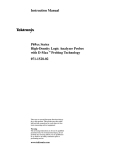
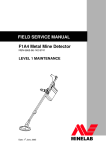
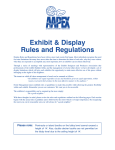
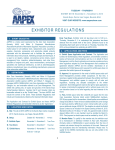
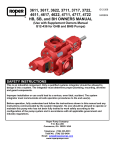
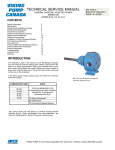
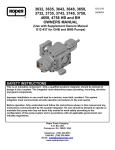
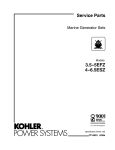
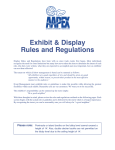

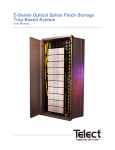

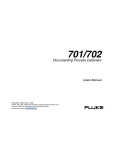
![[January] [2010] Oracle Part Number E51712-01](http://vs1.manualzilla.com/store/data/005963836_1-7094ec60d76539196cdb565251425f84-150x150.png)
